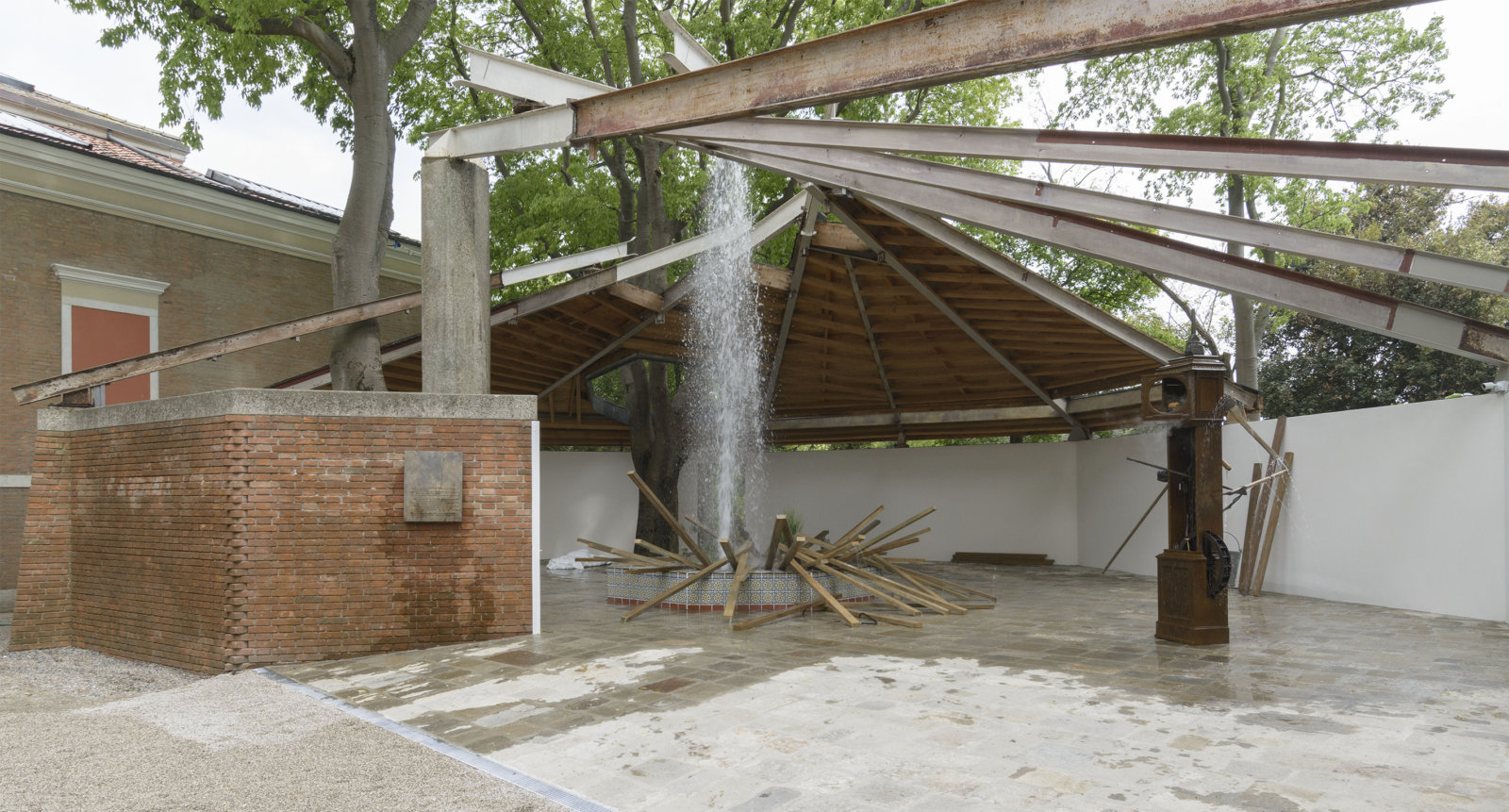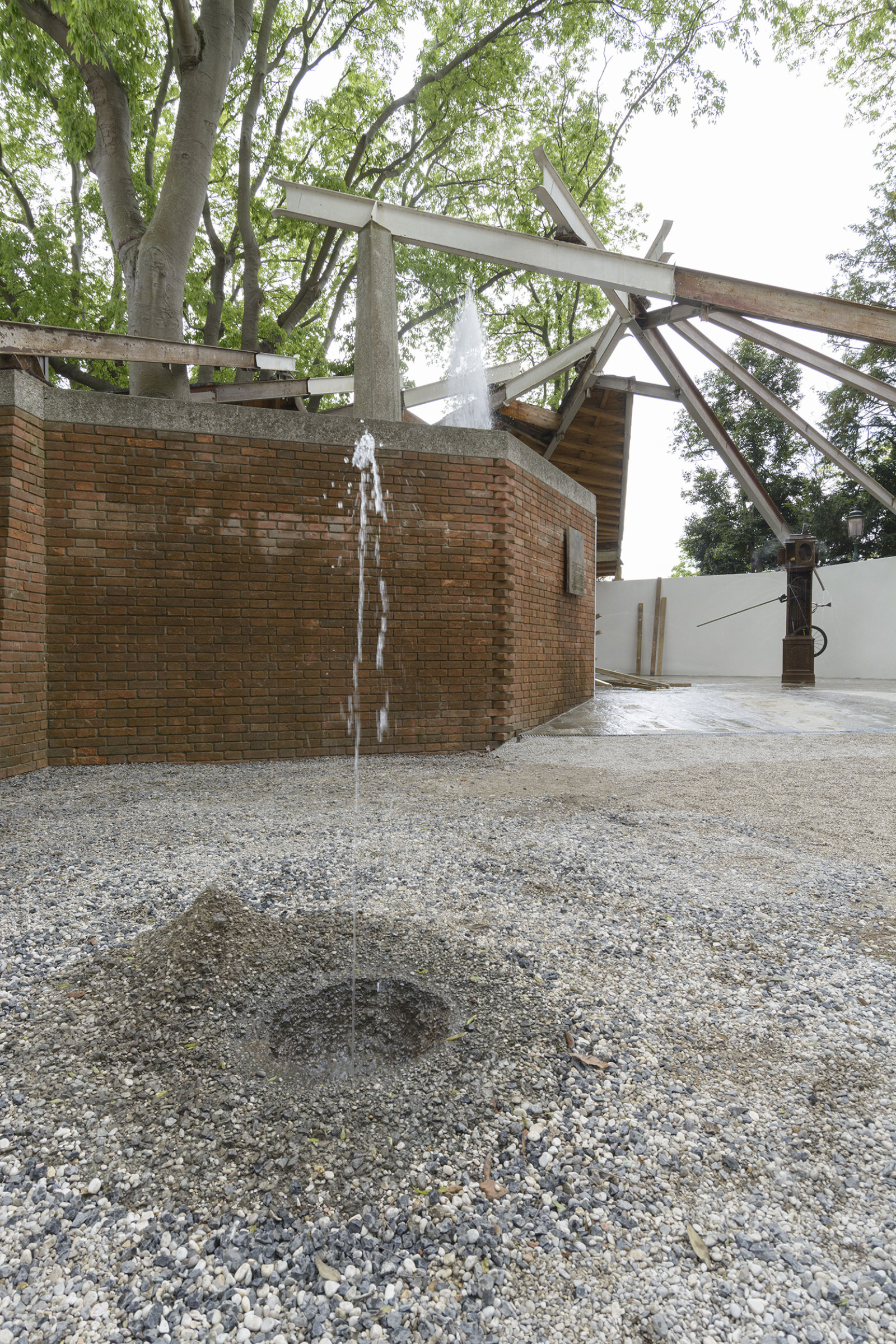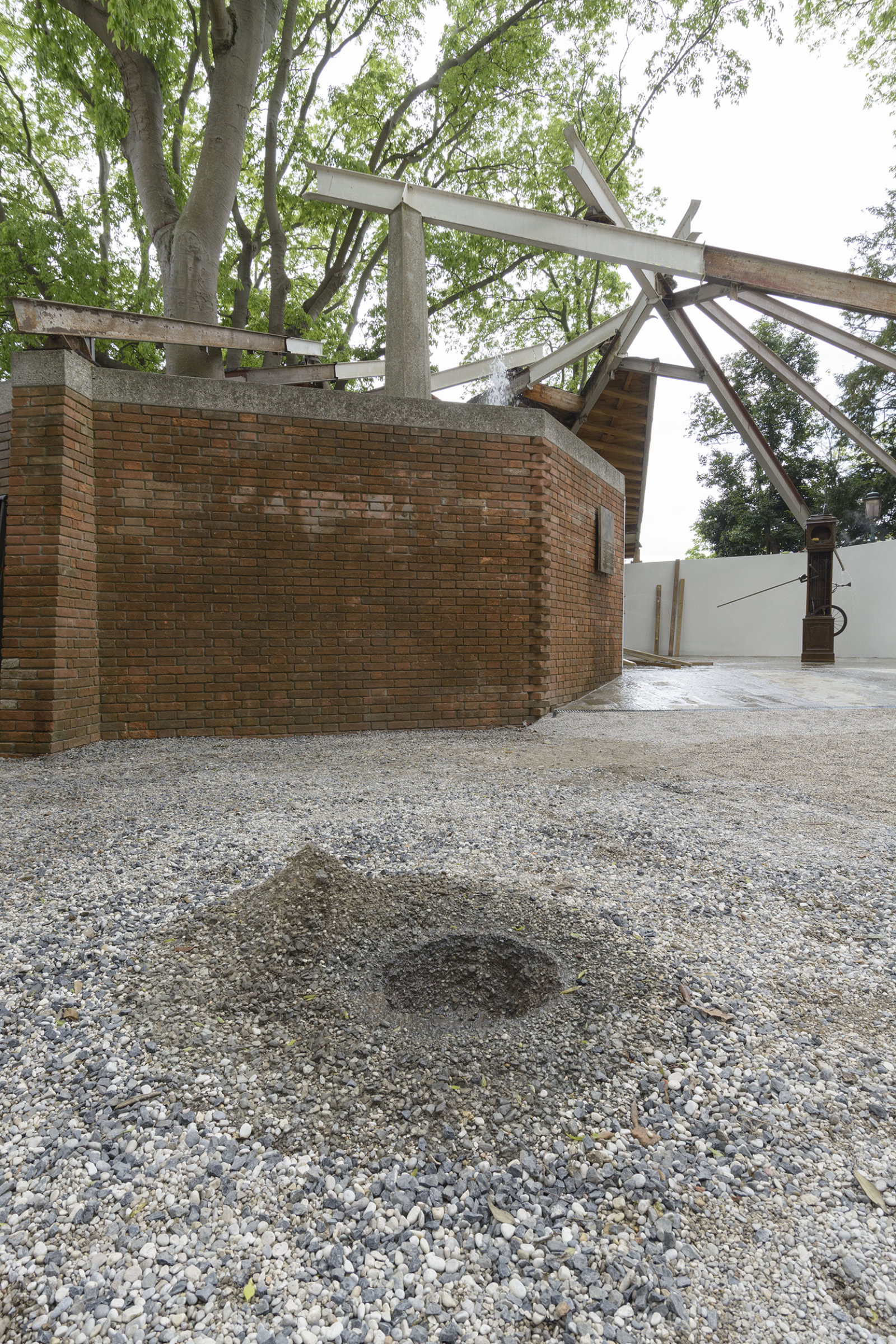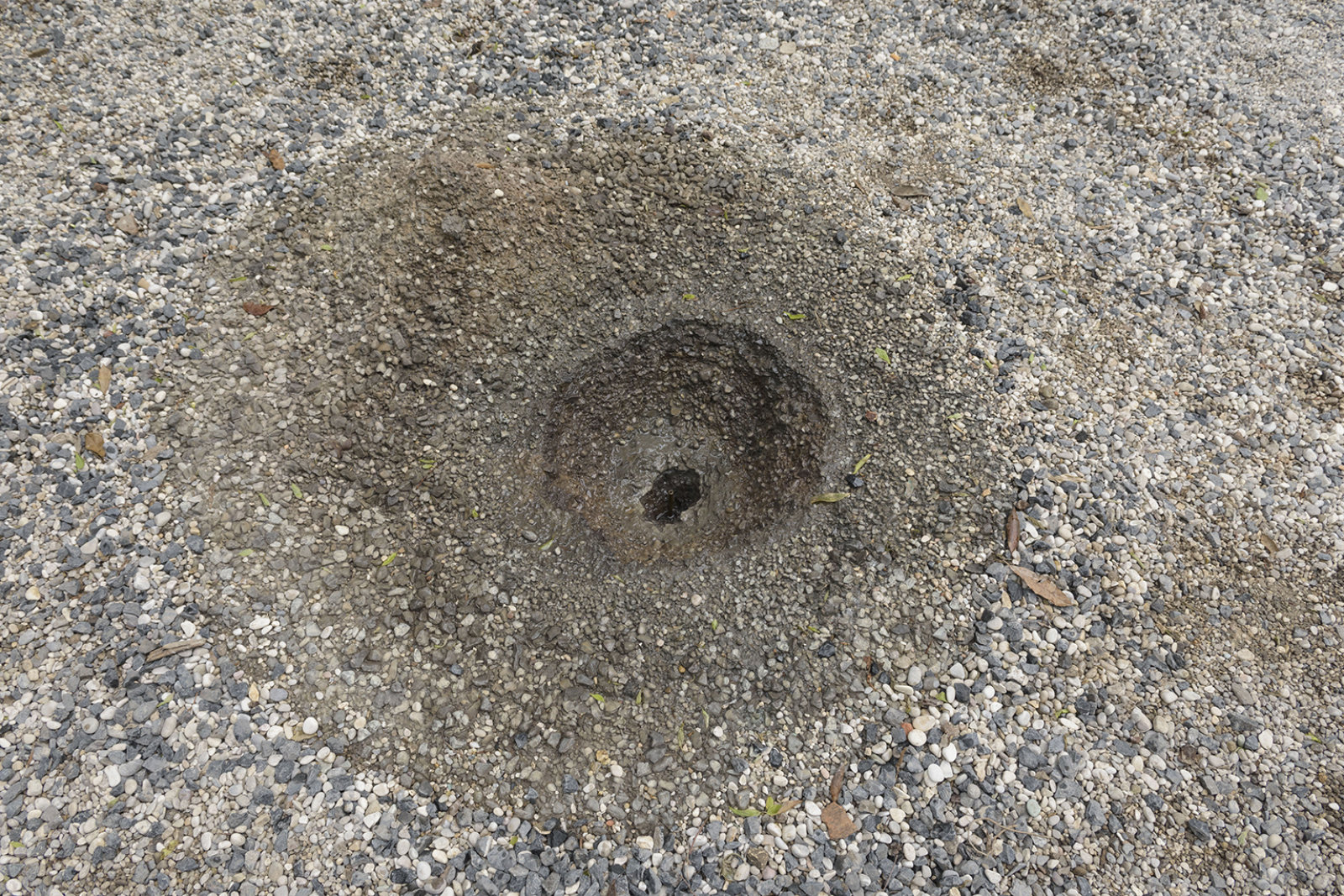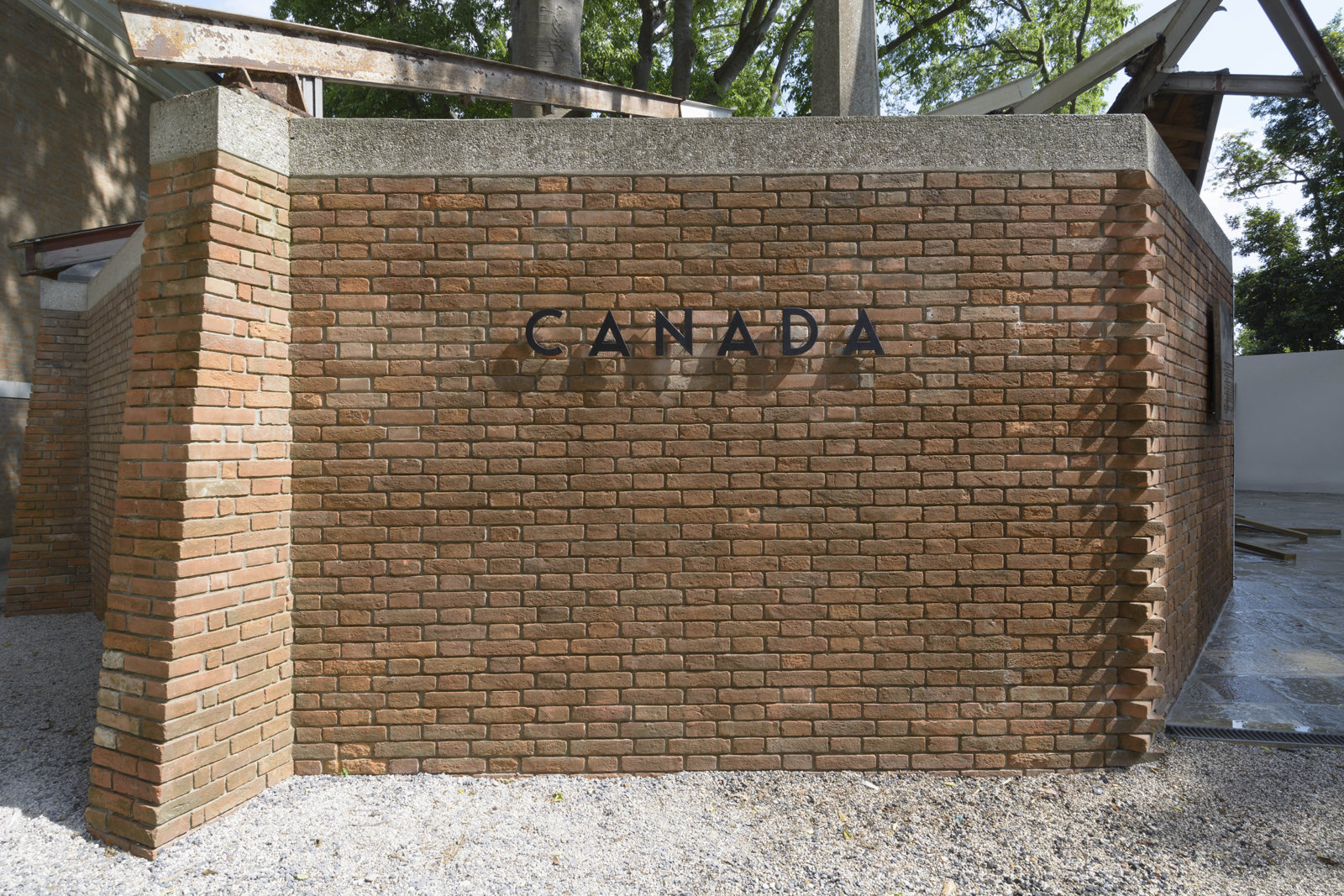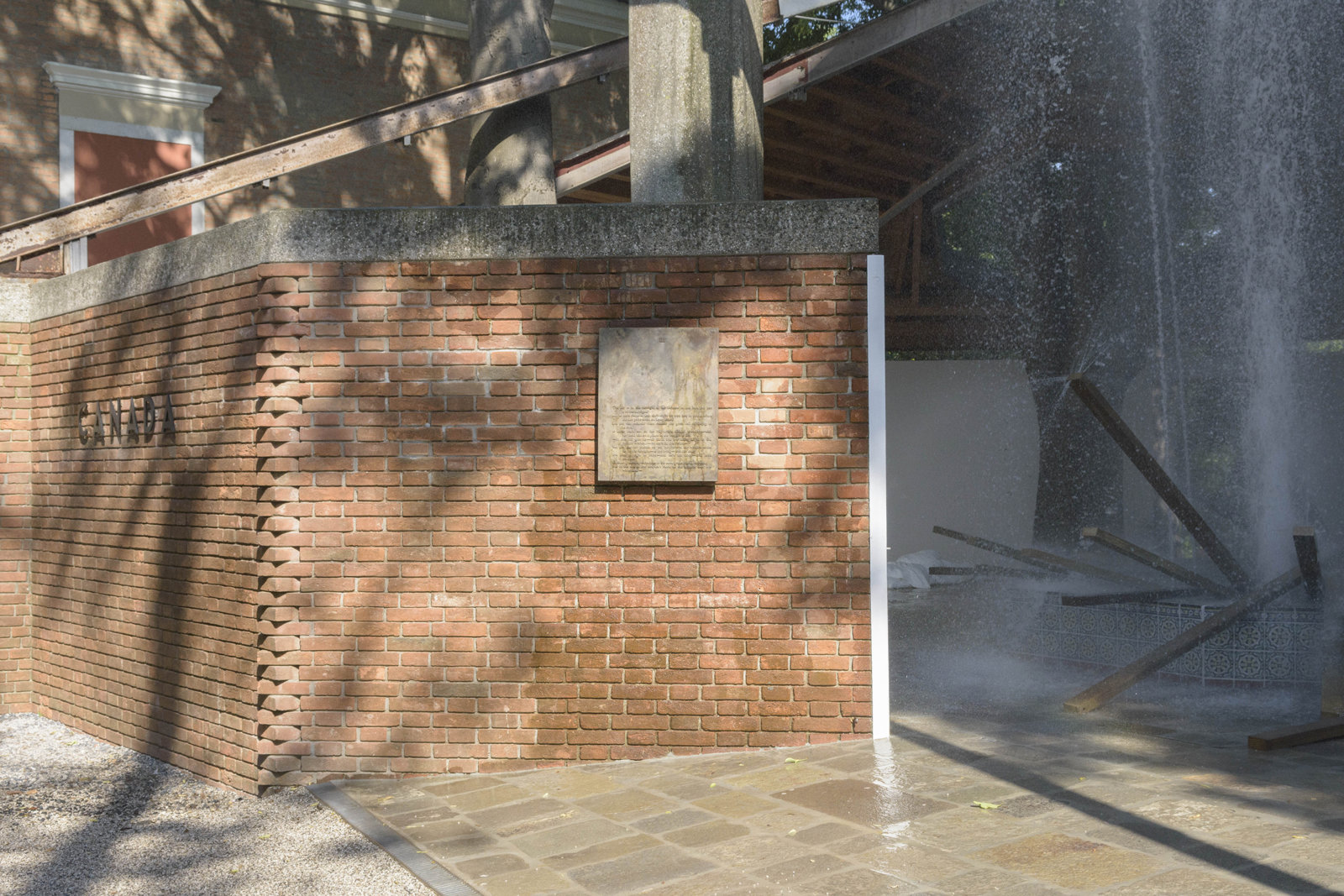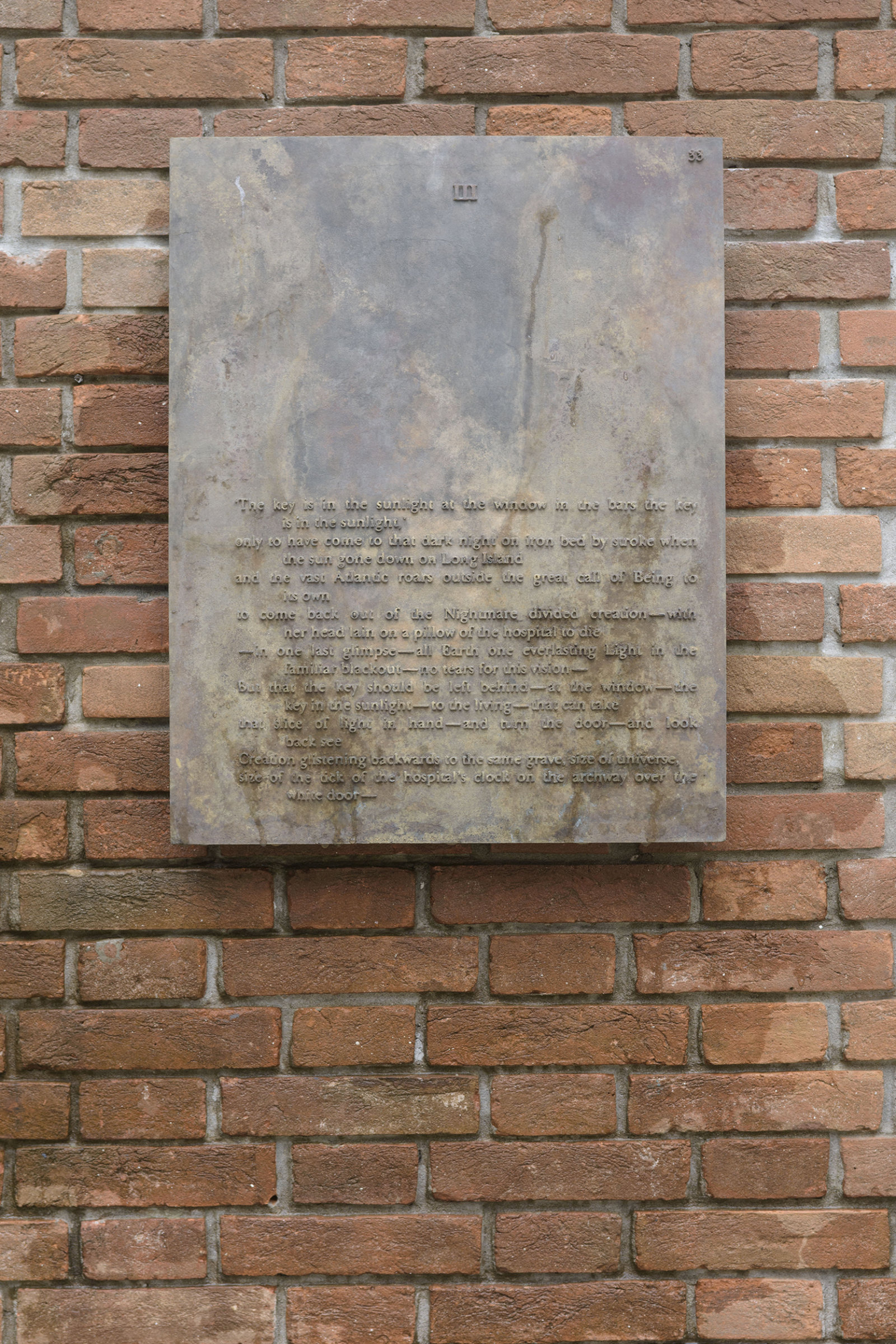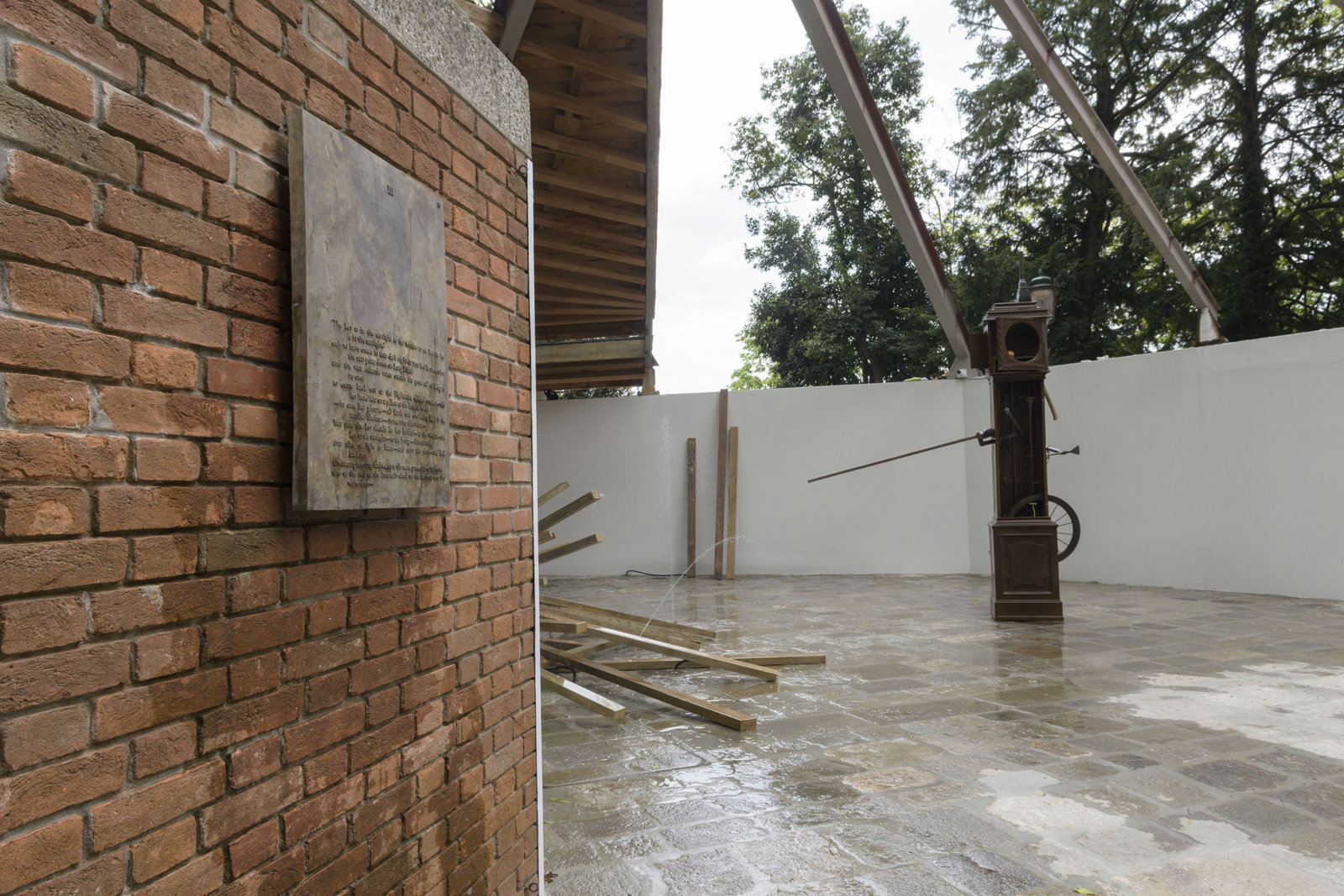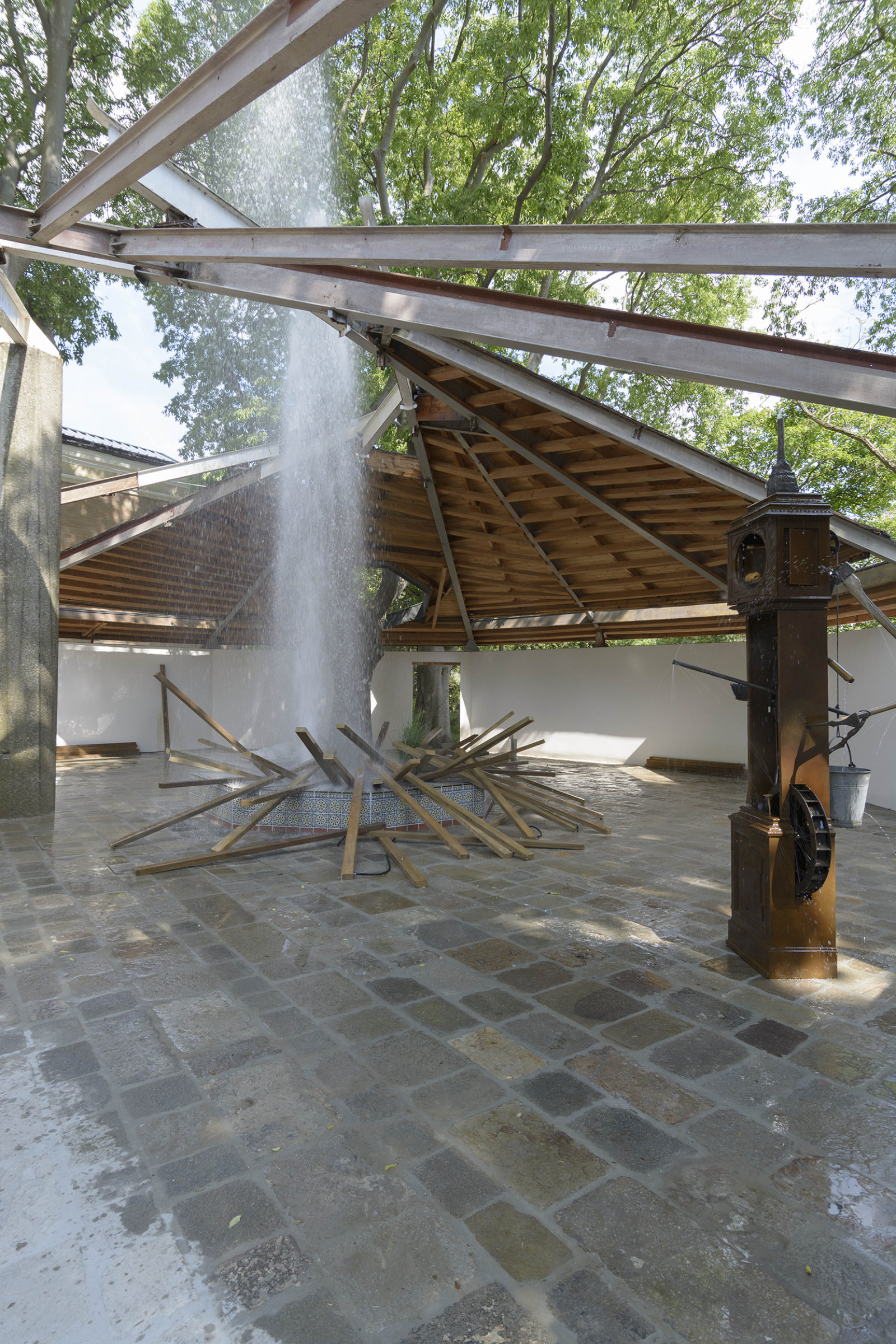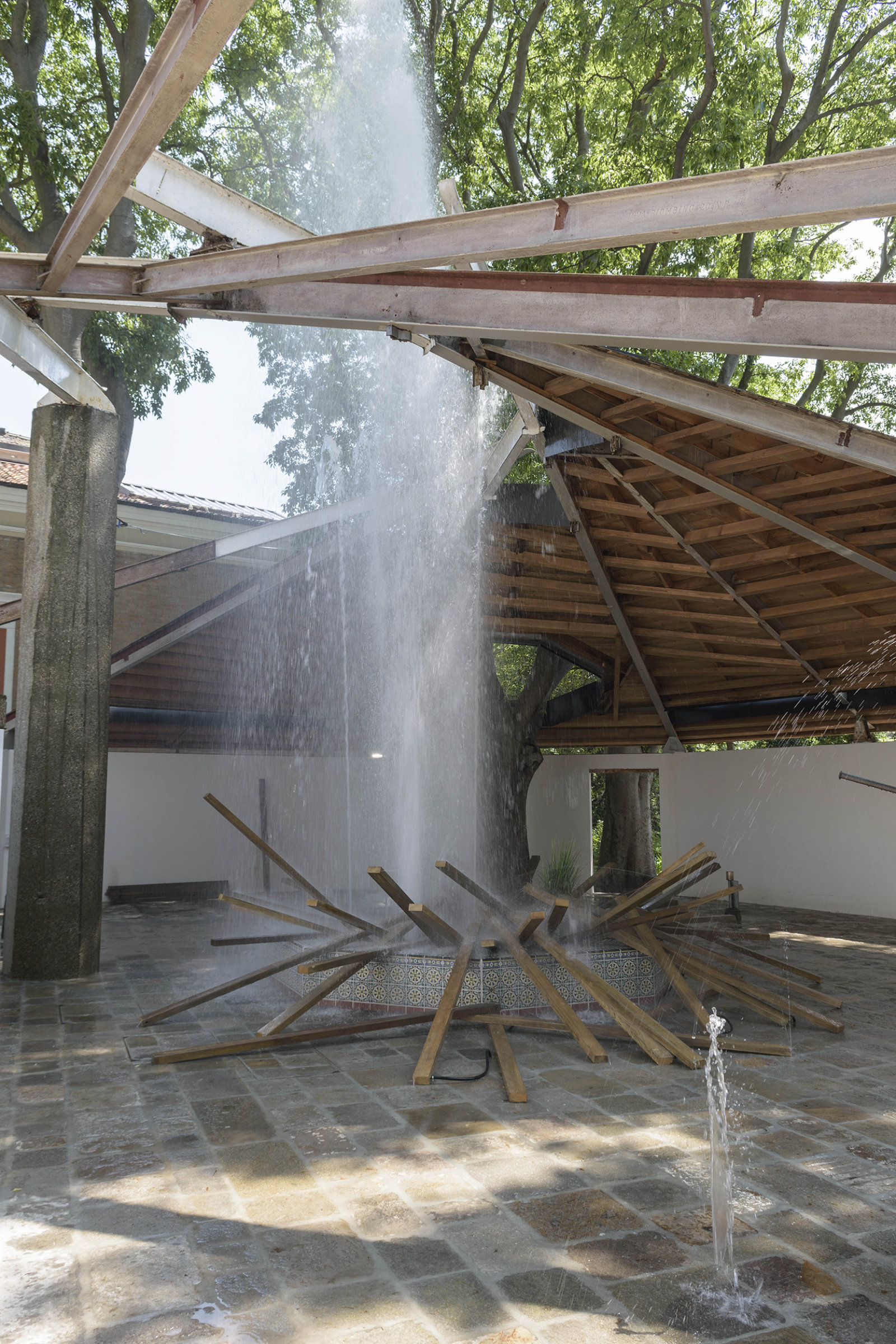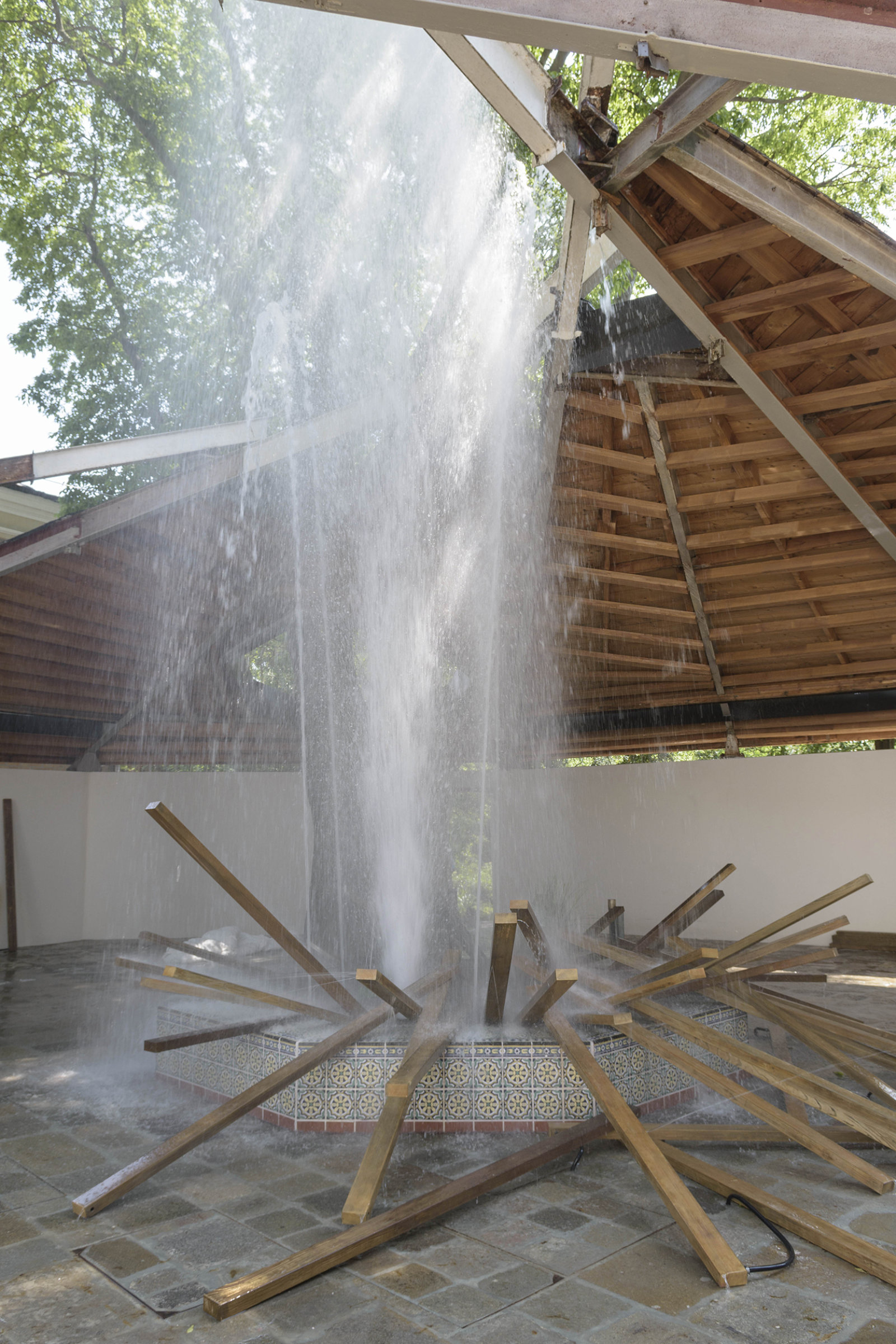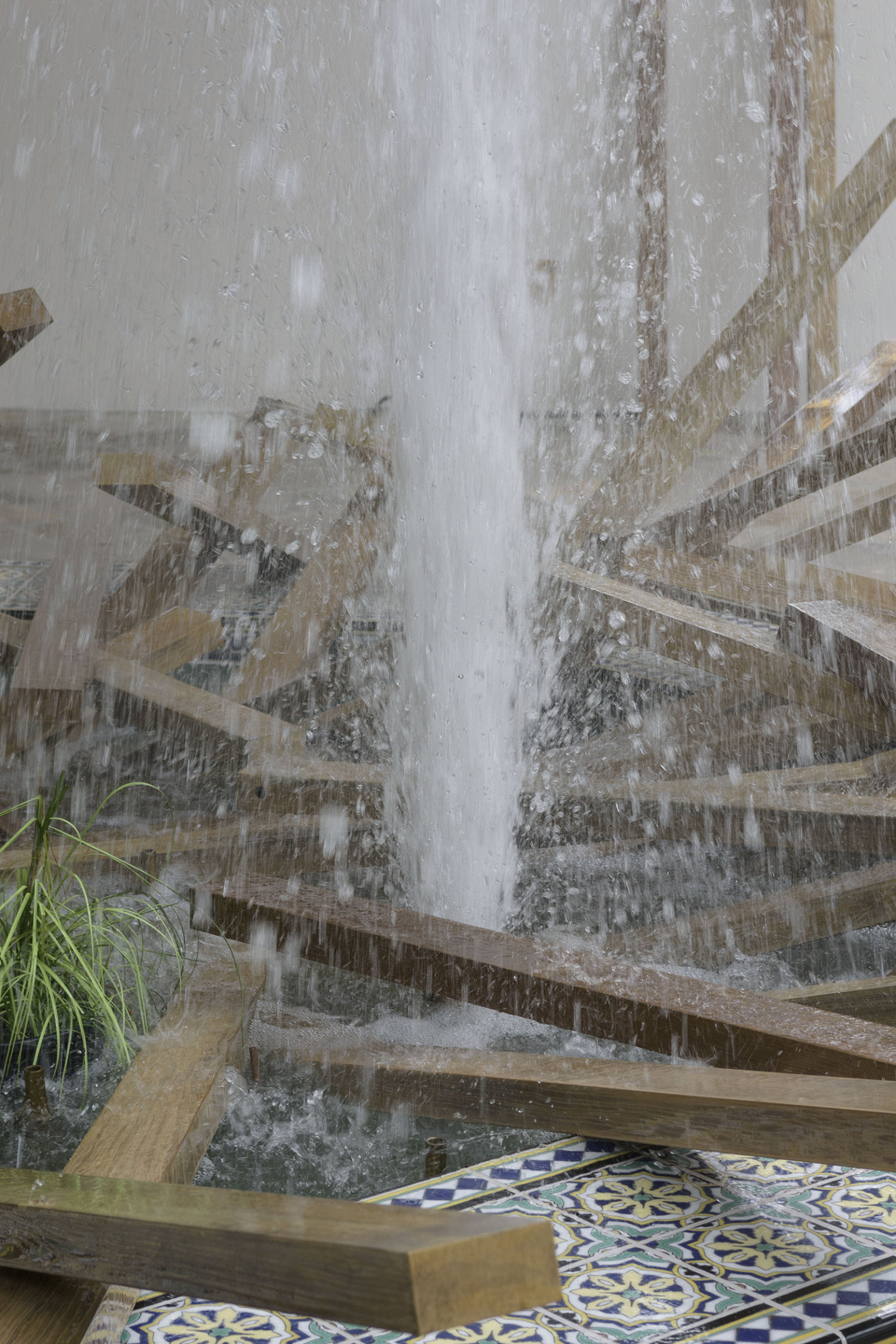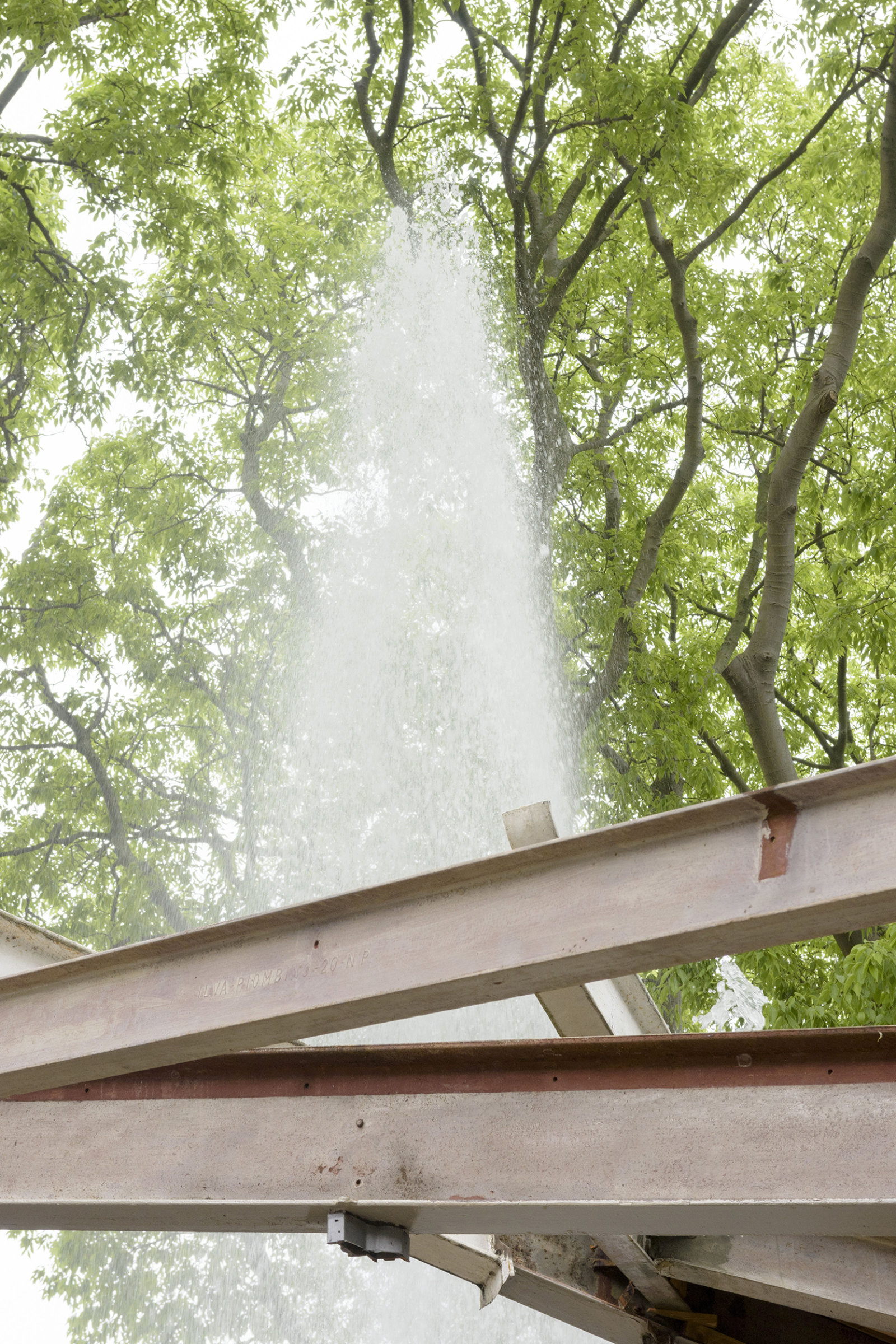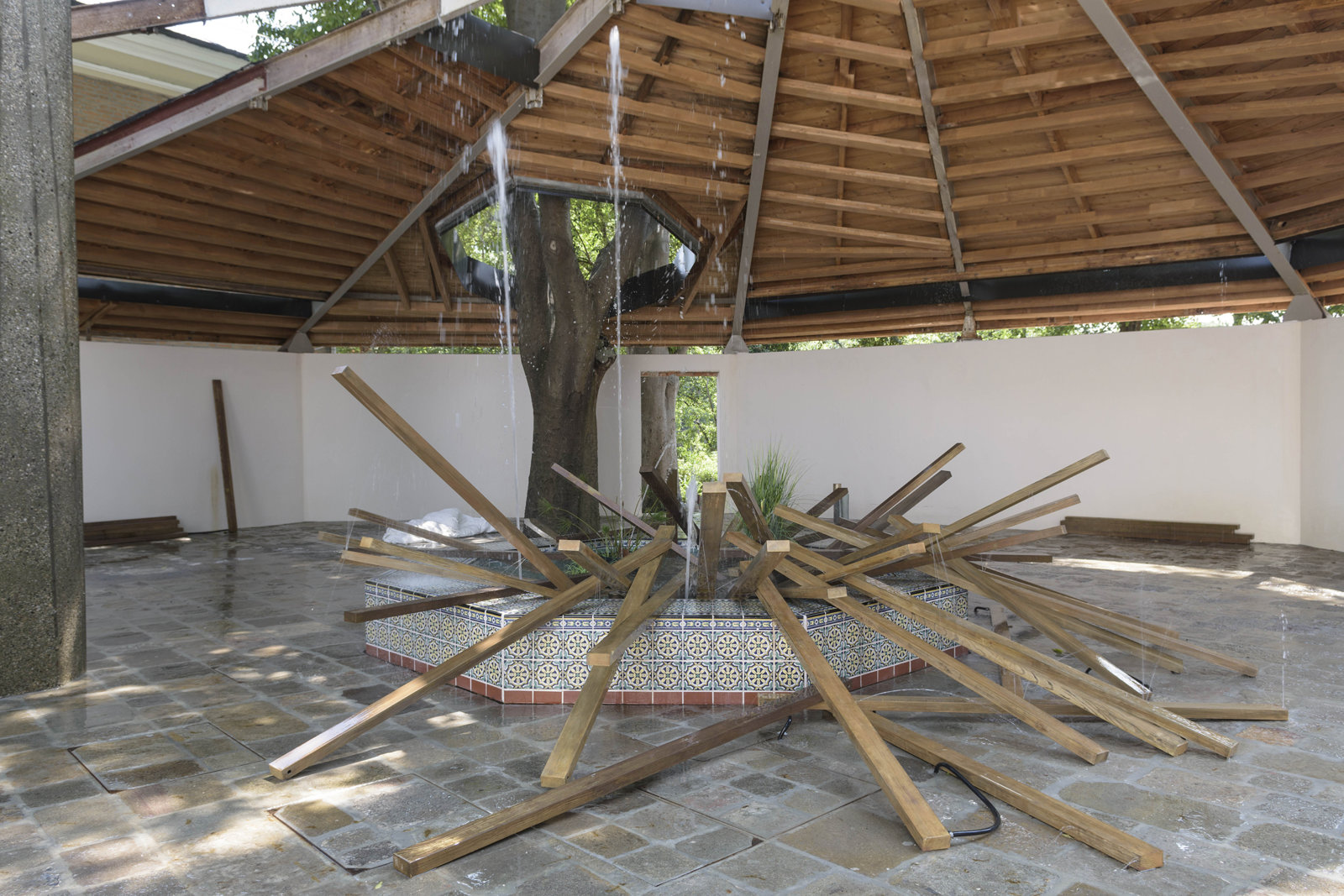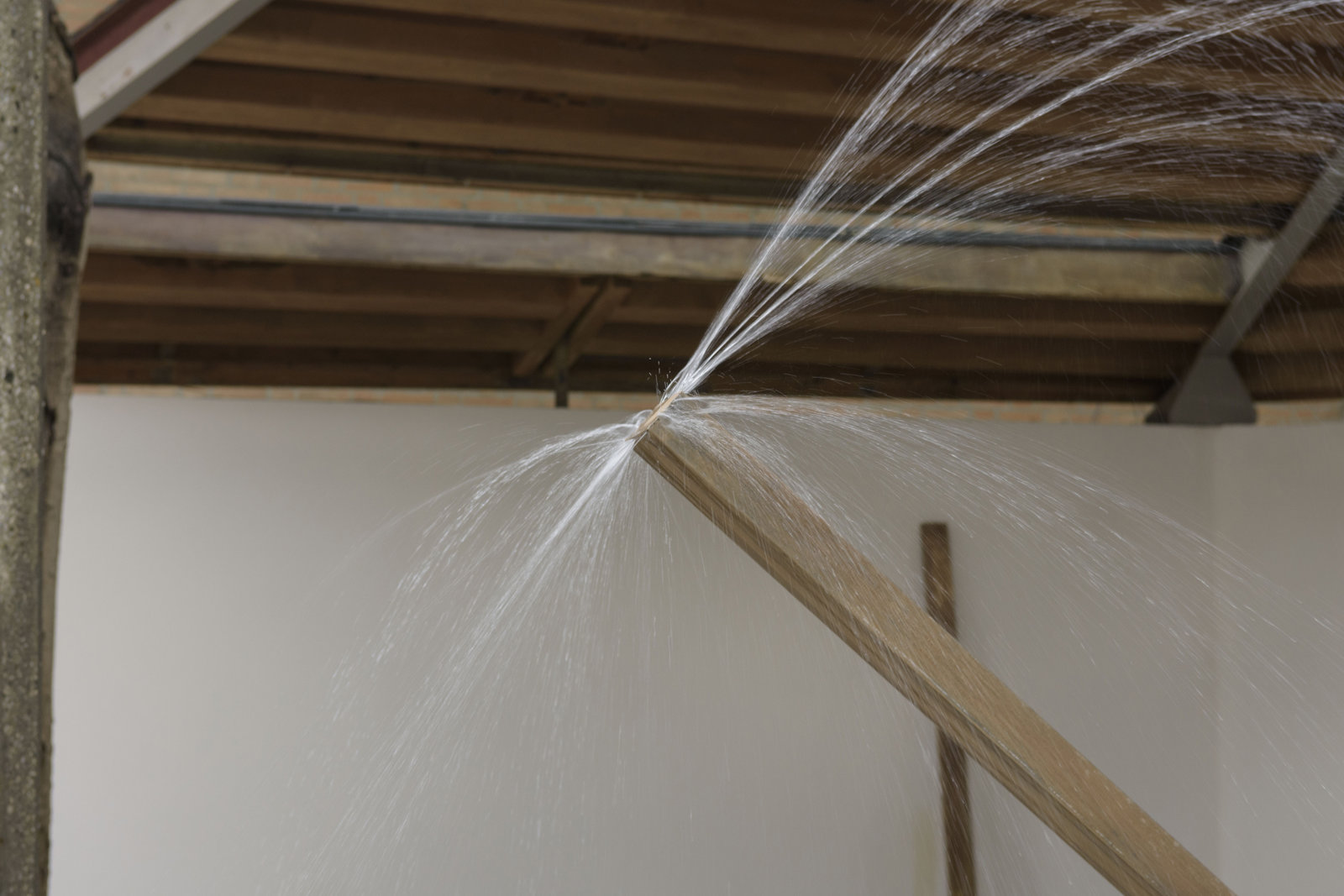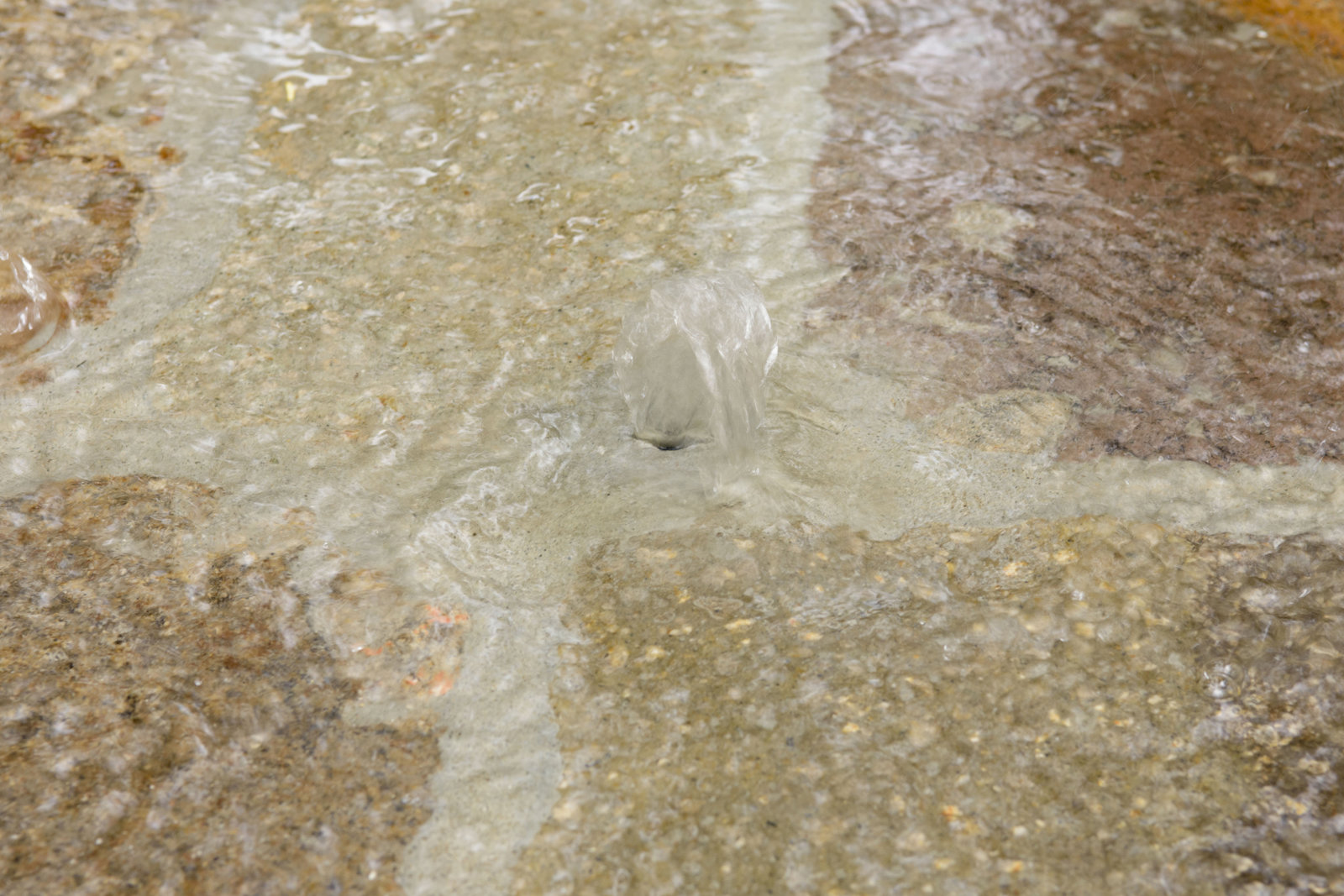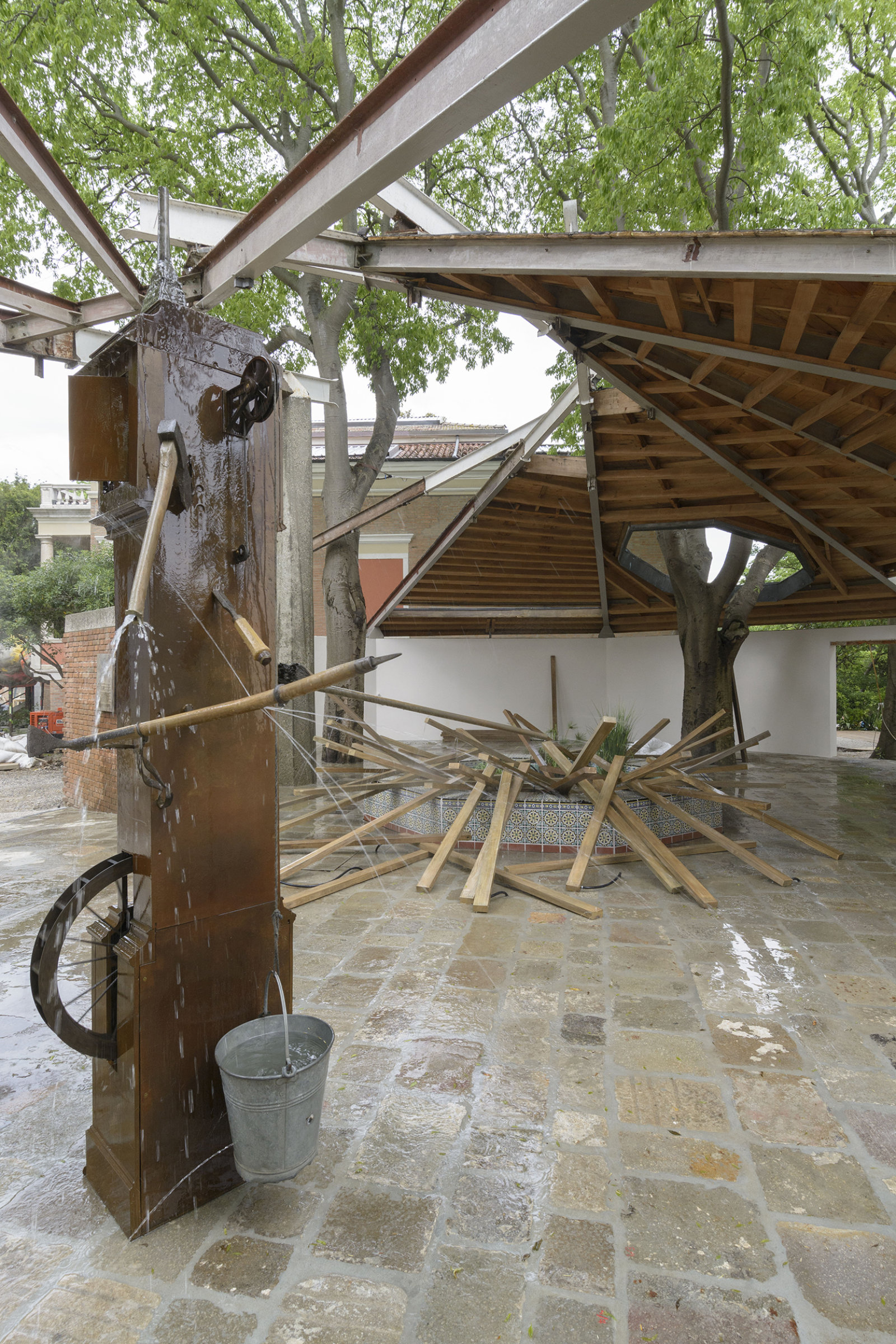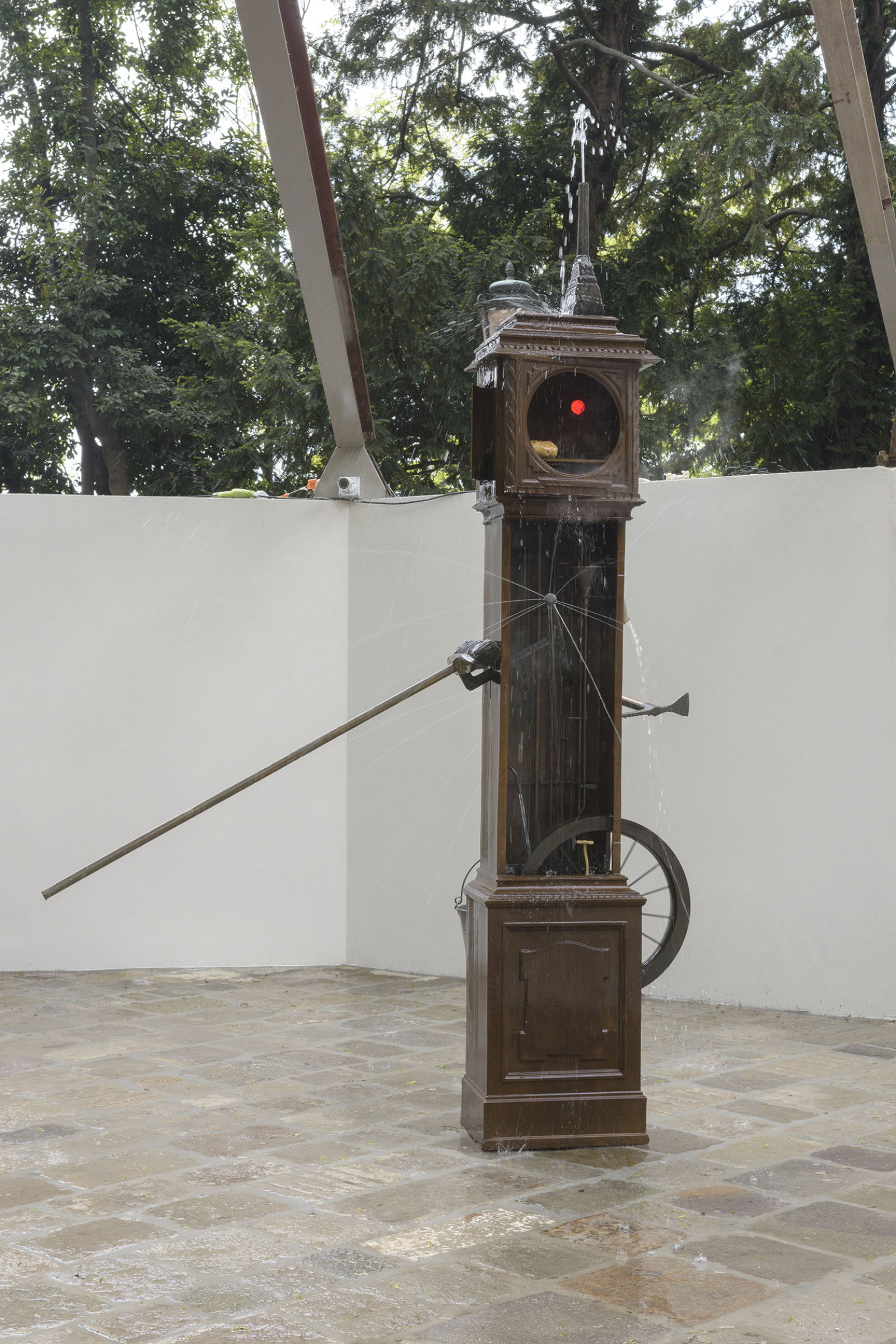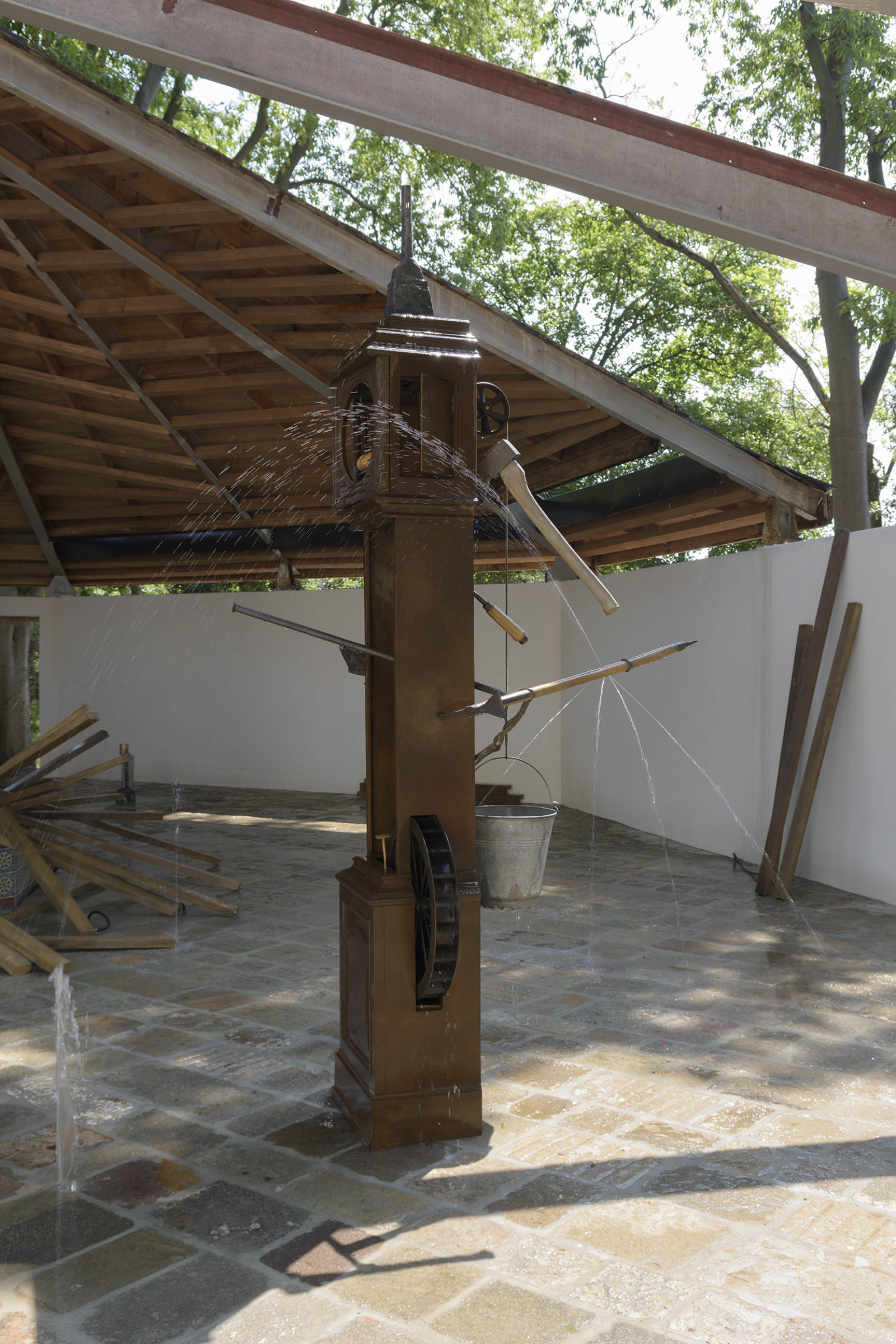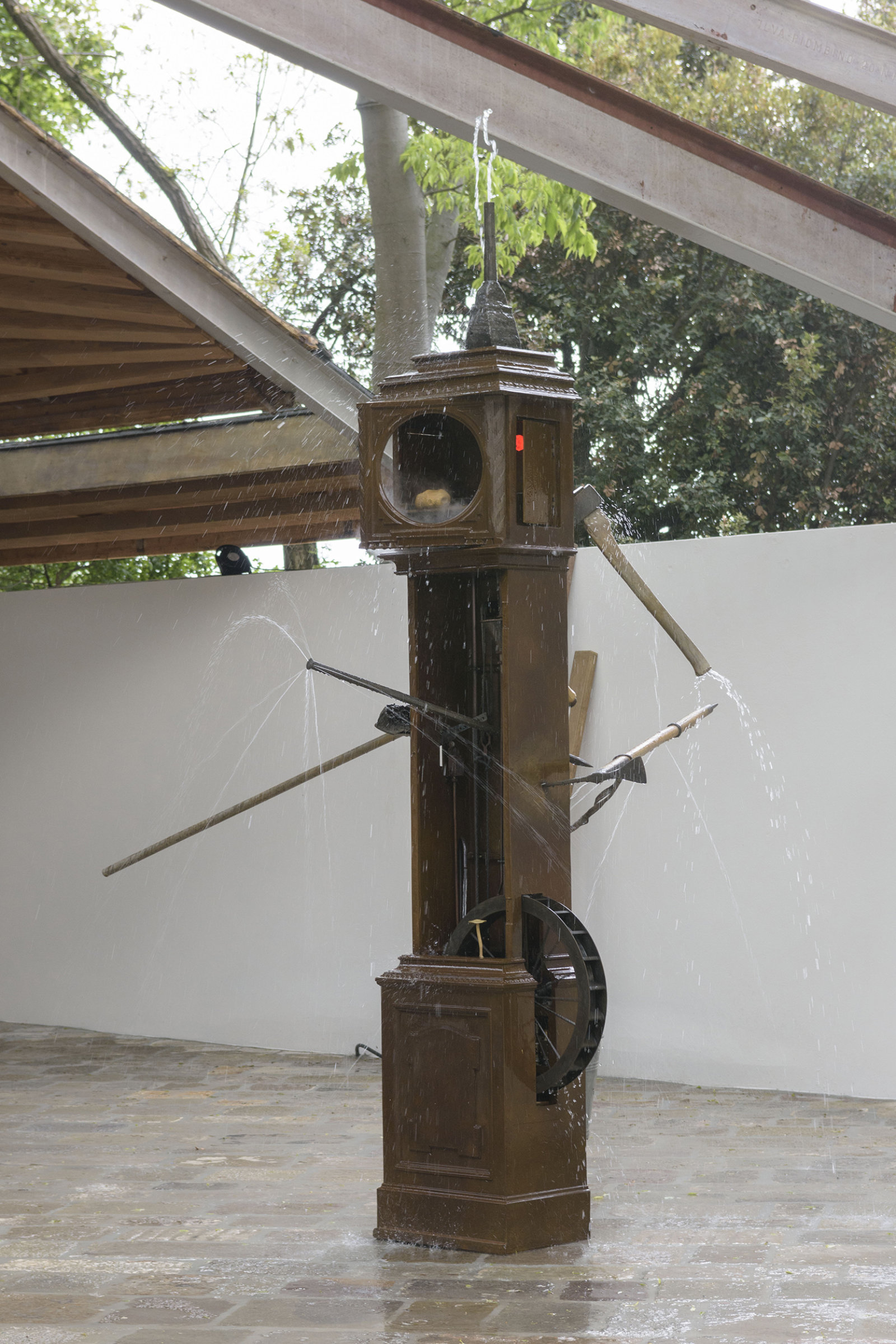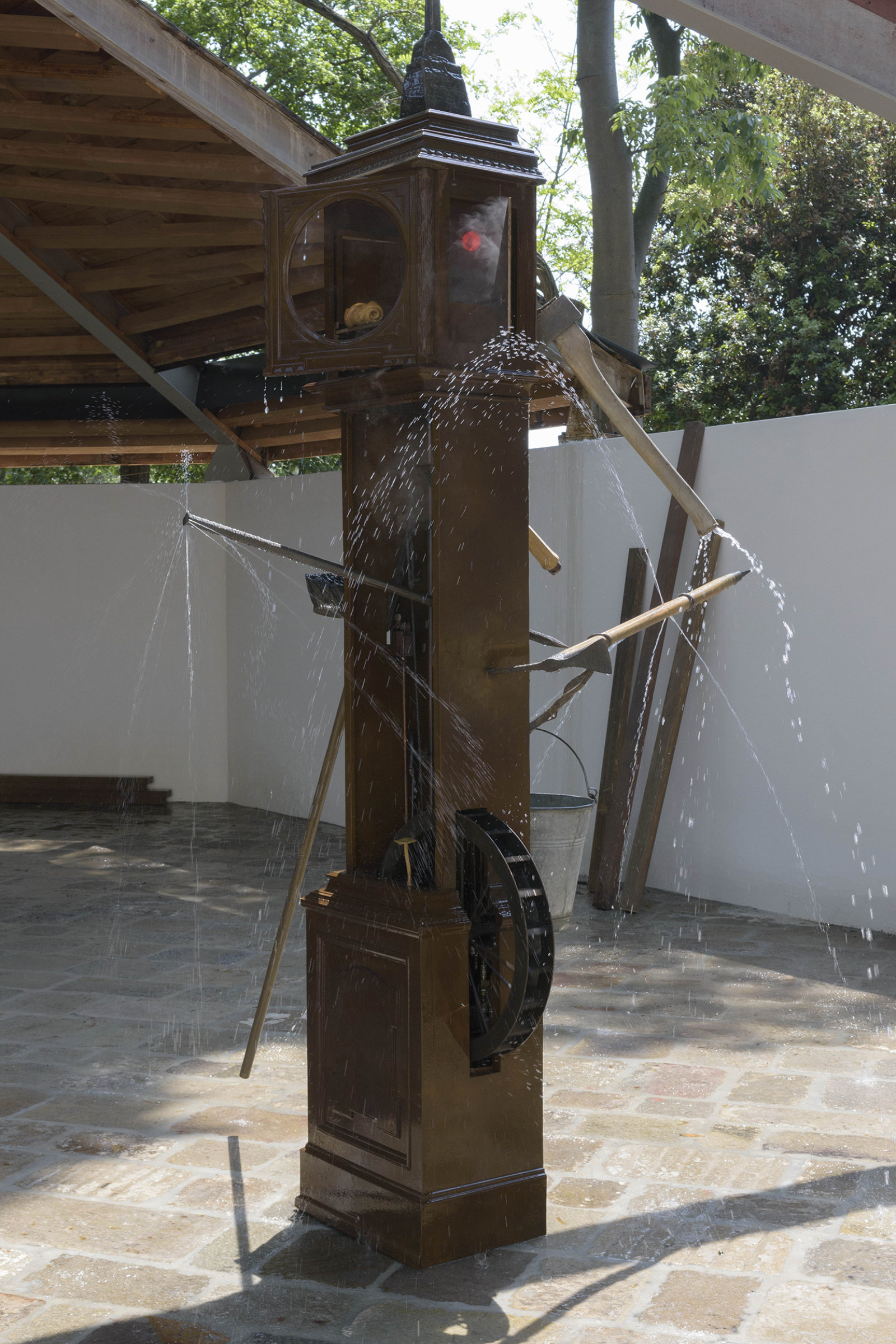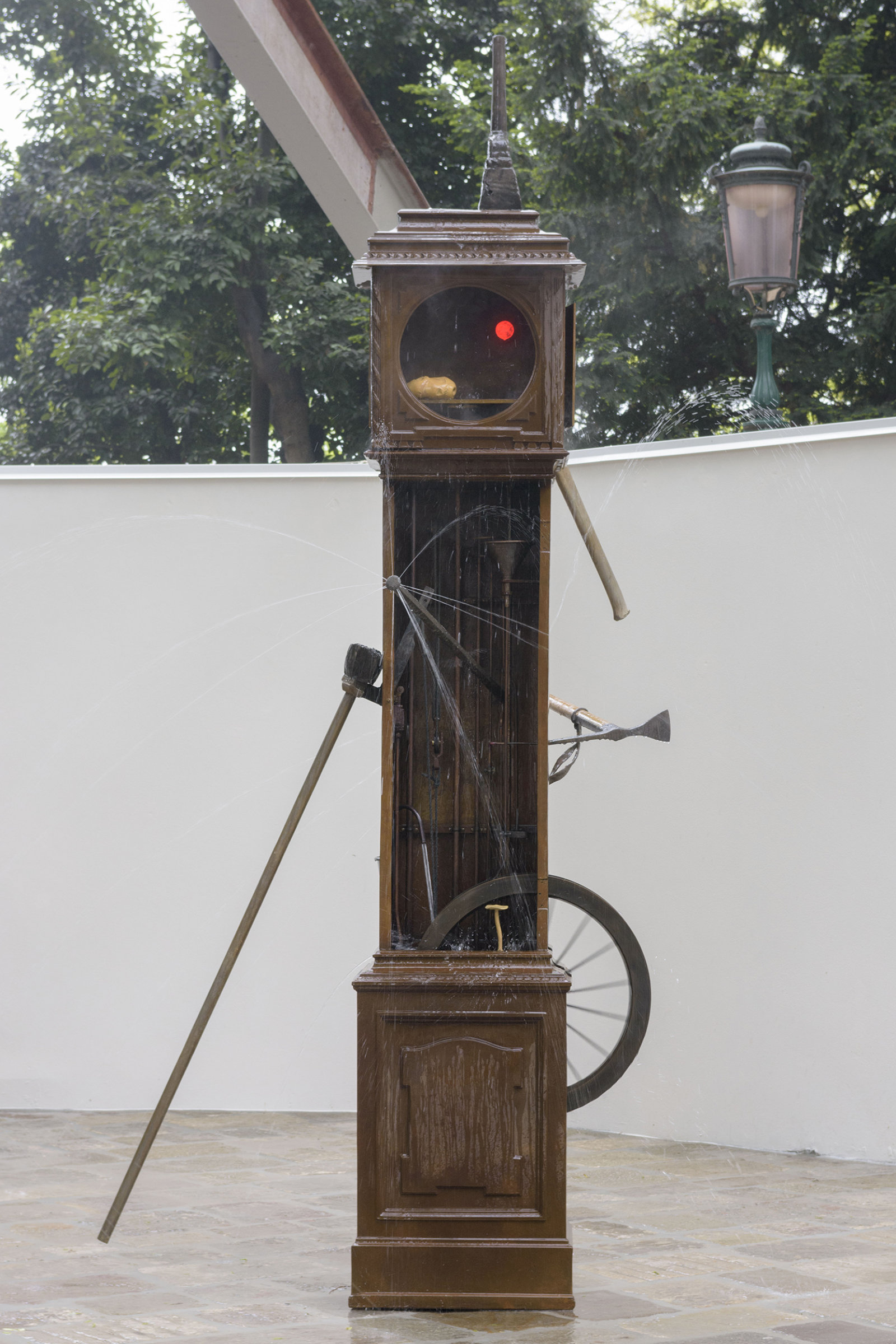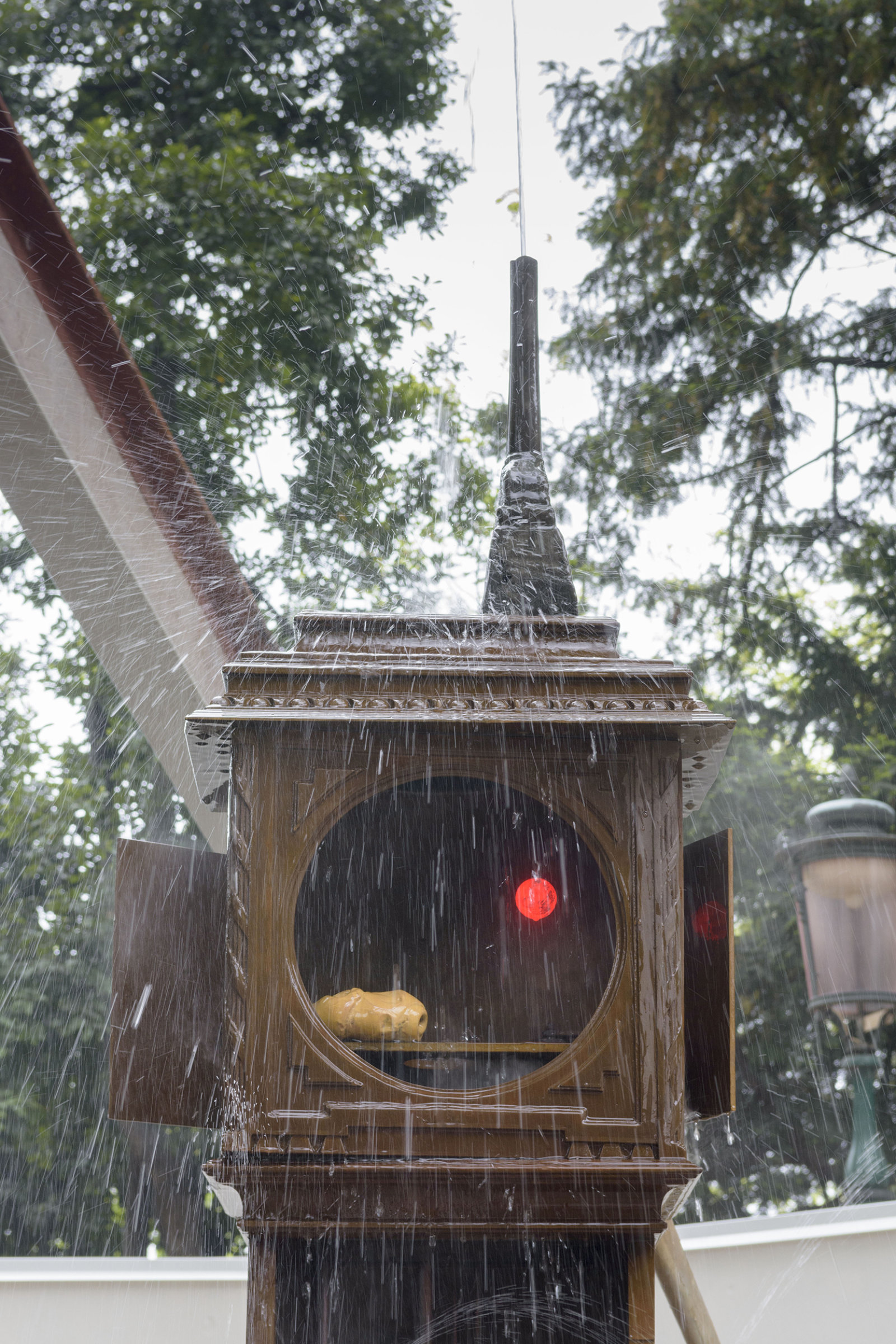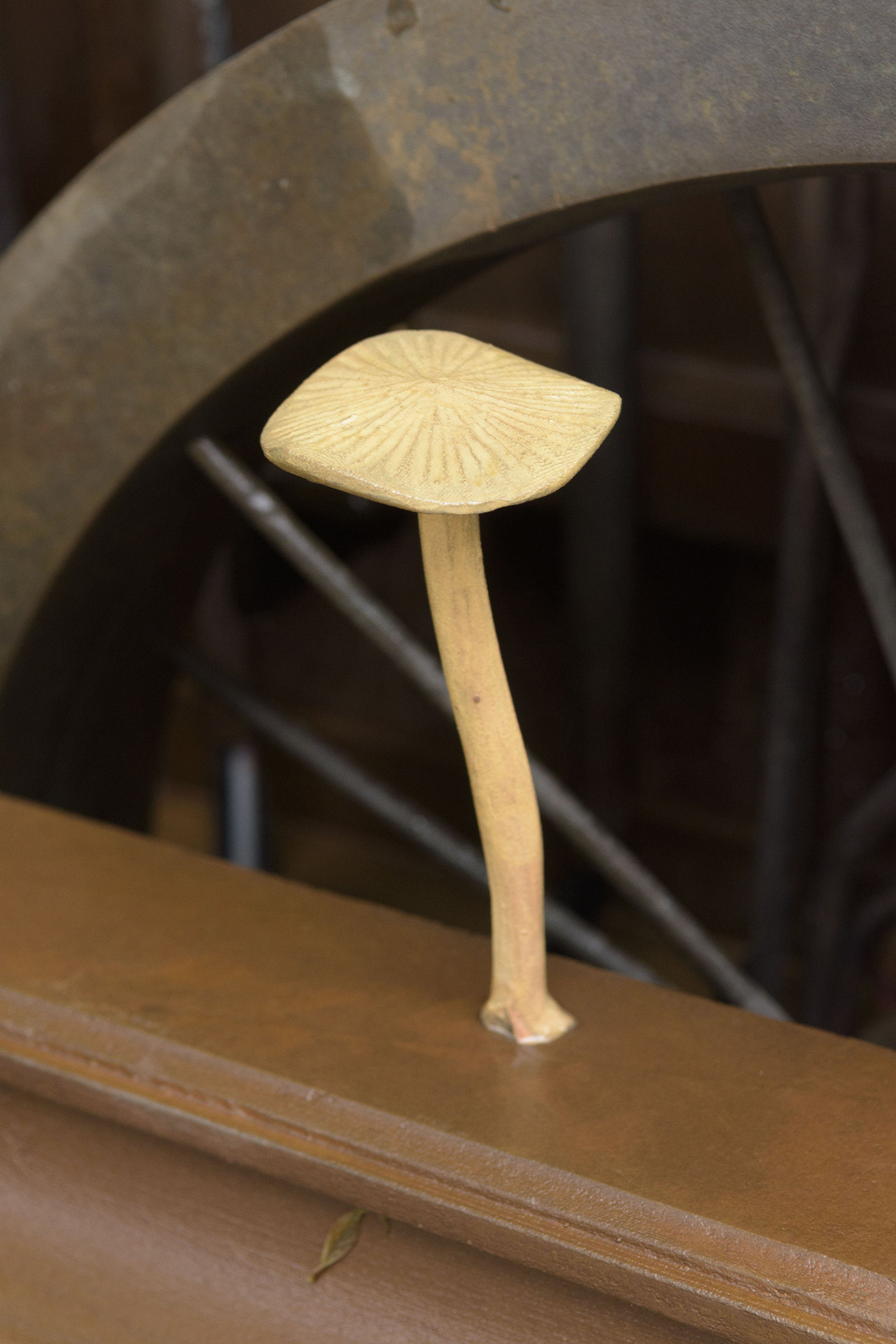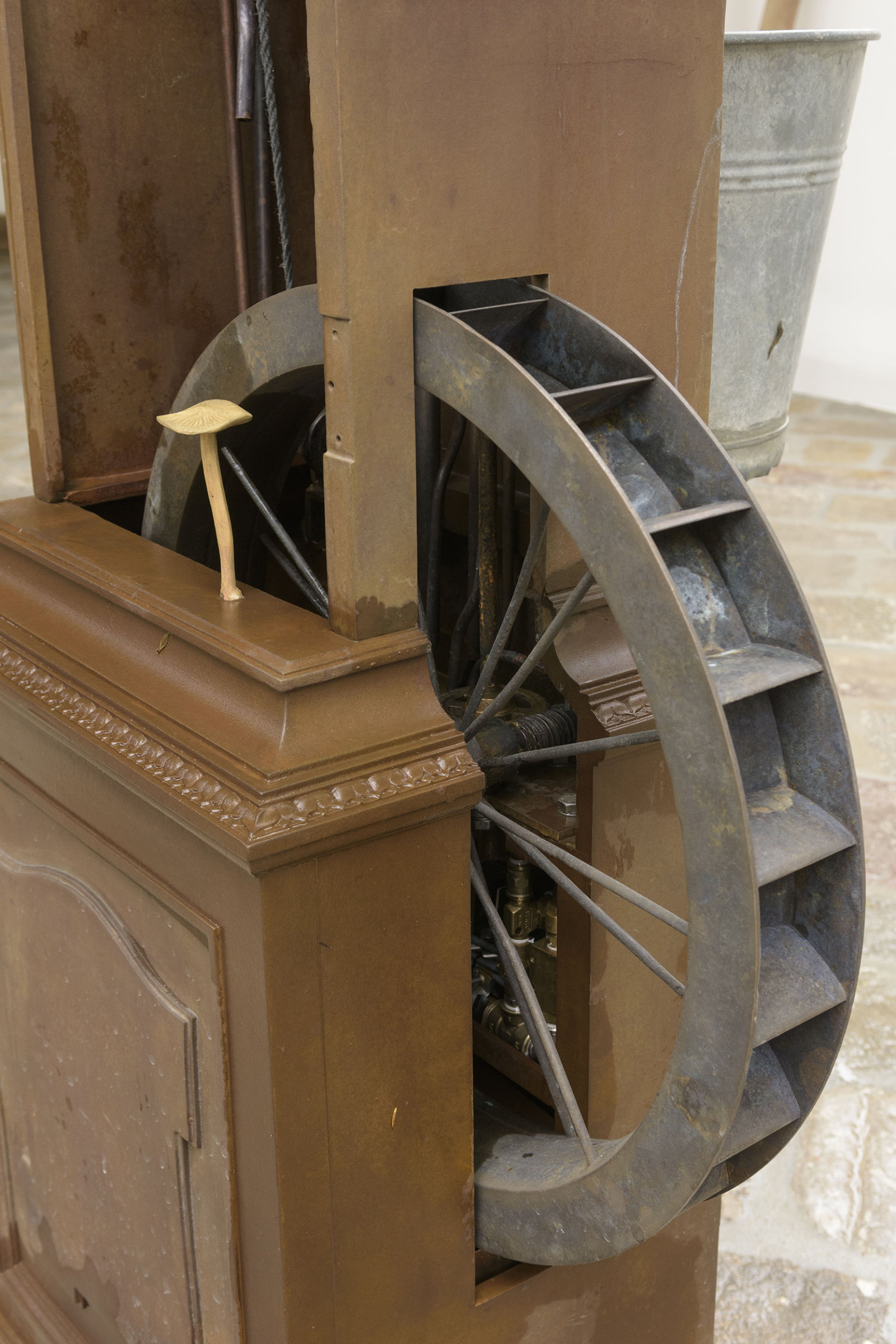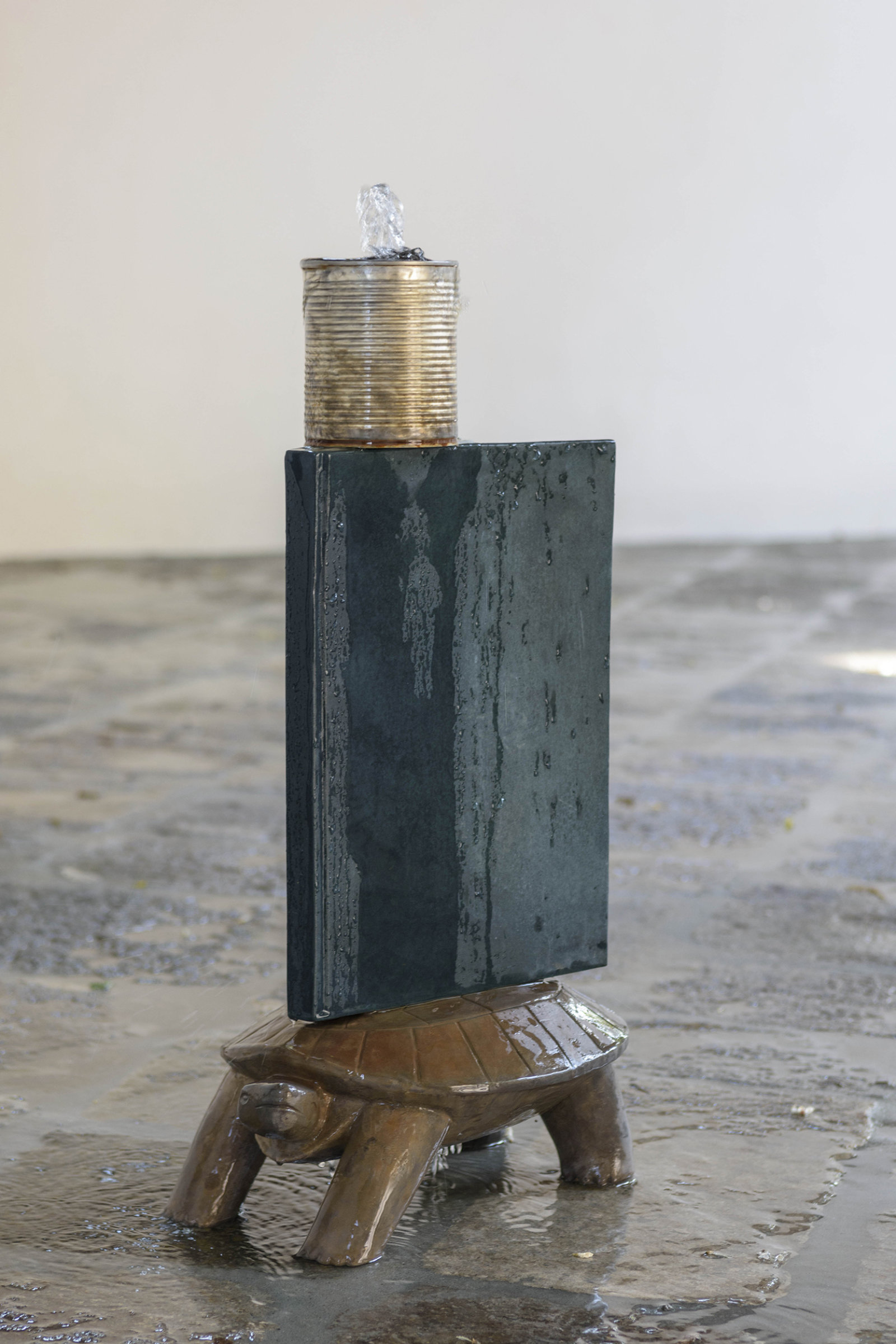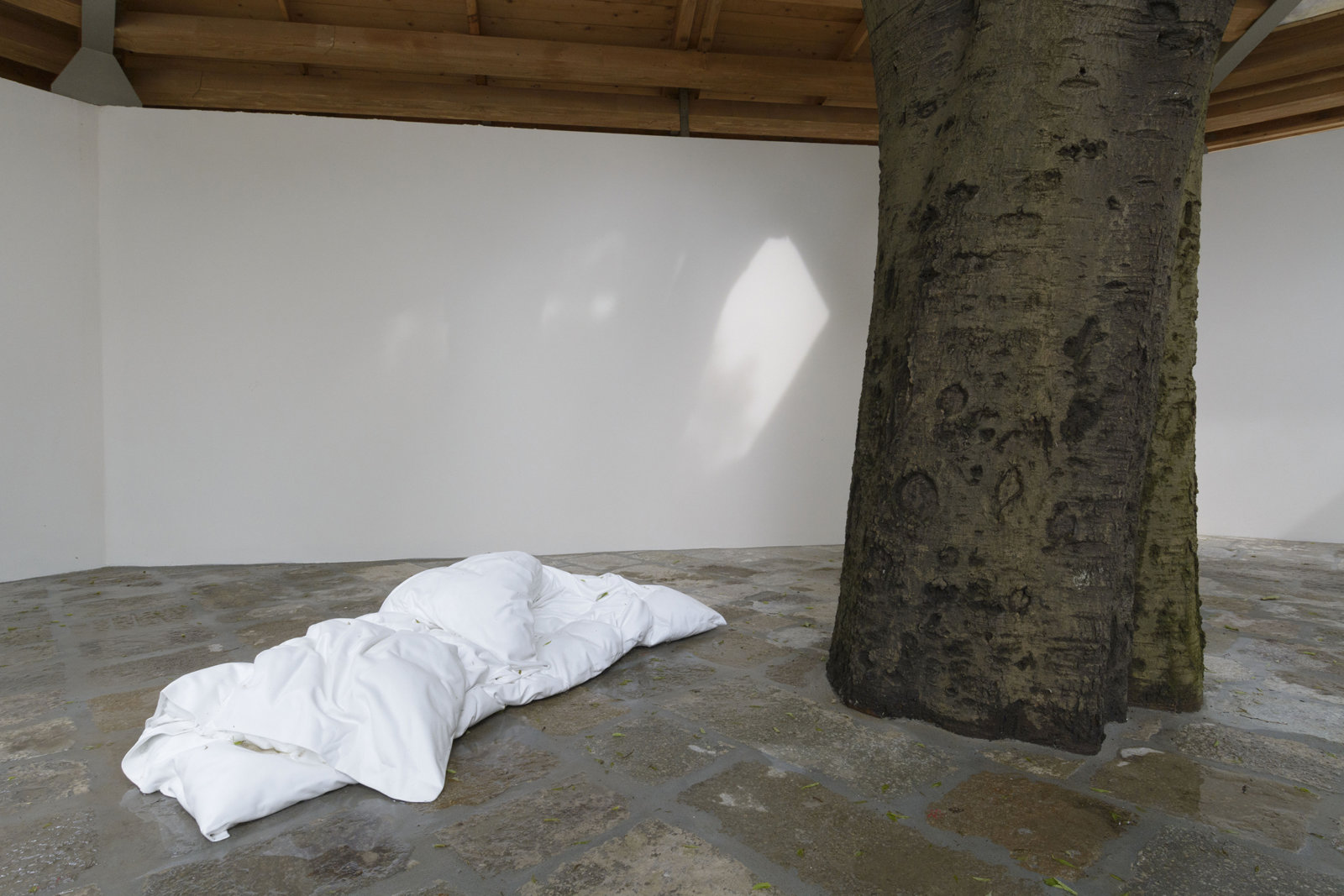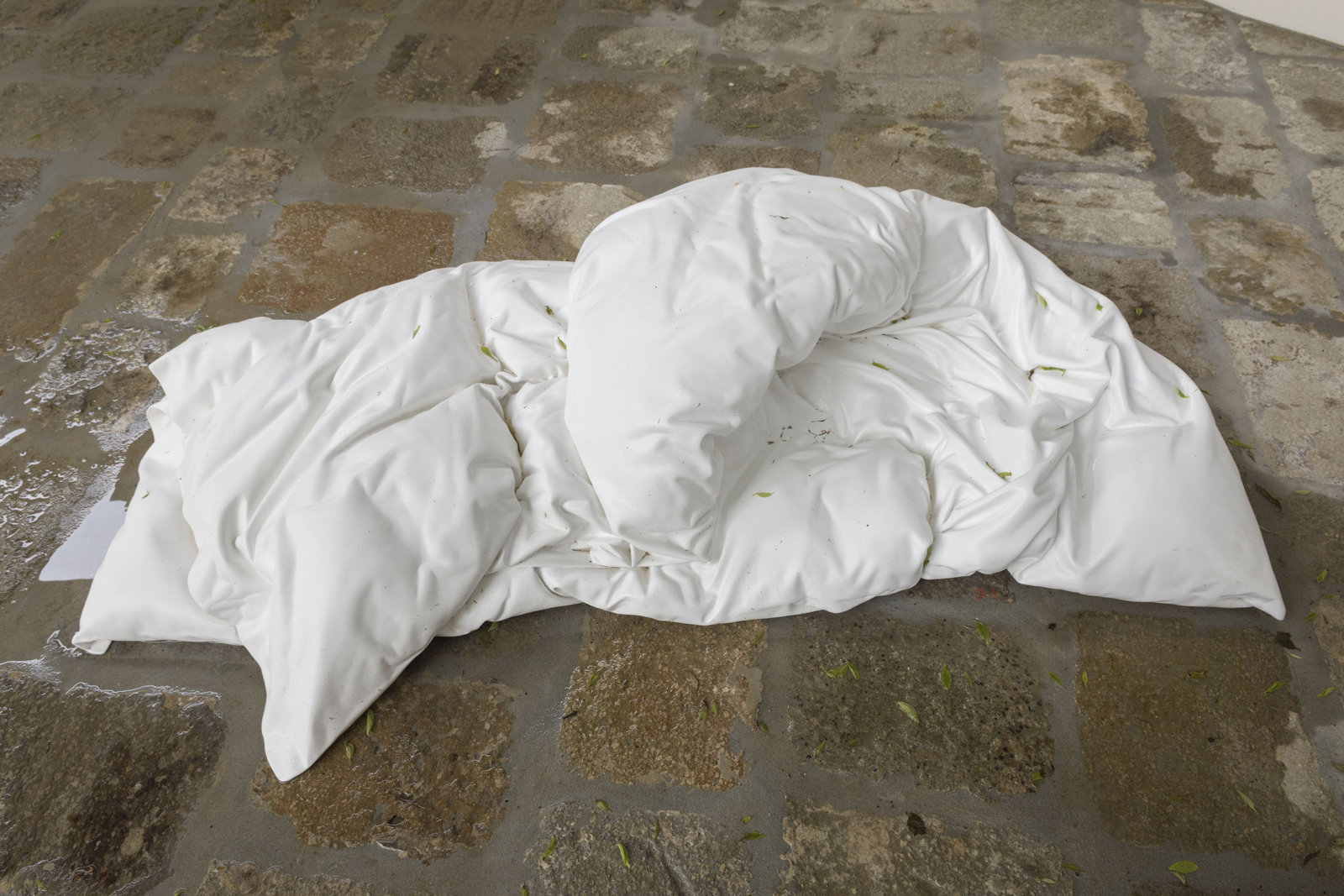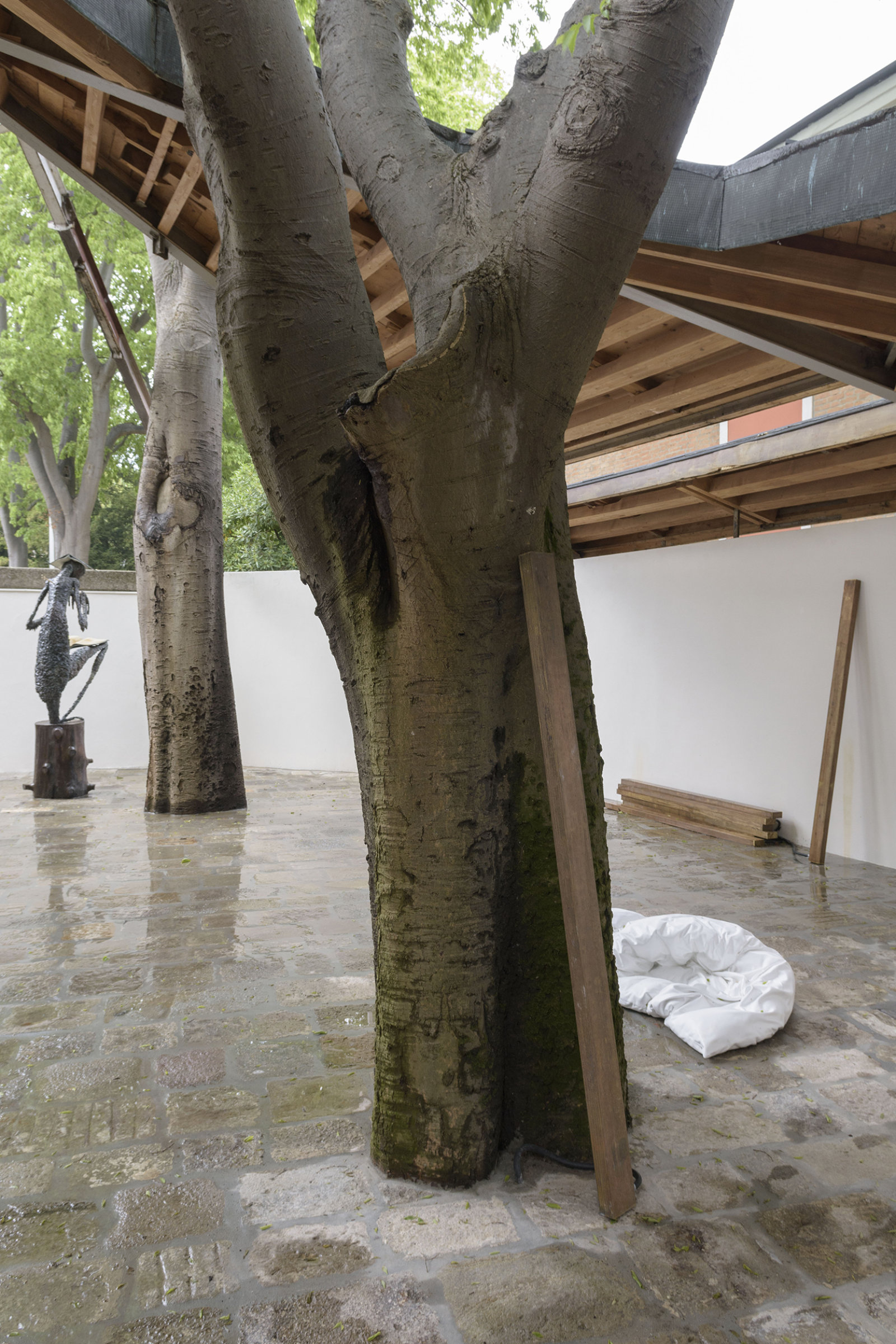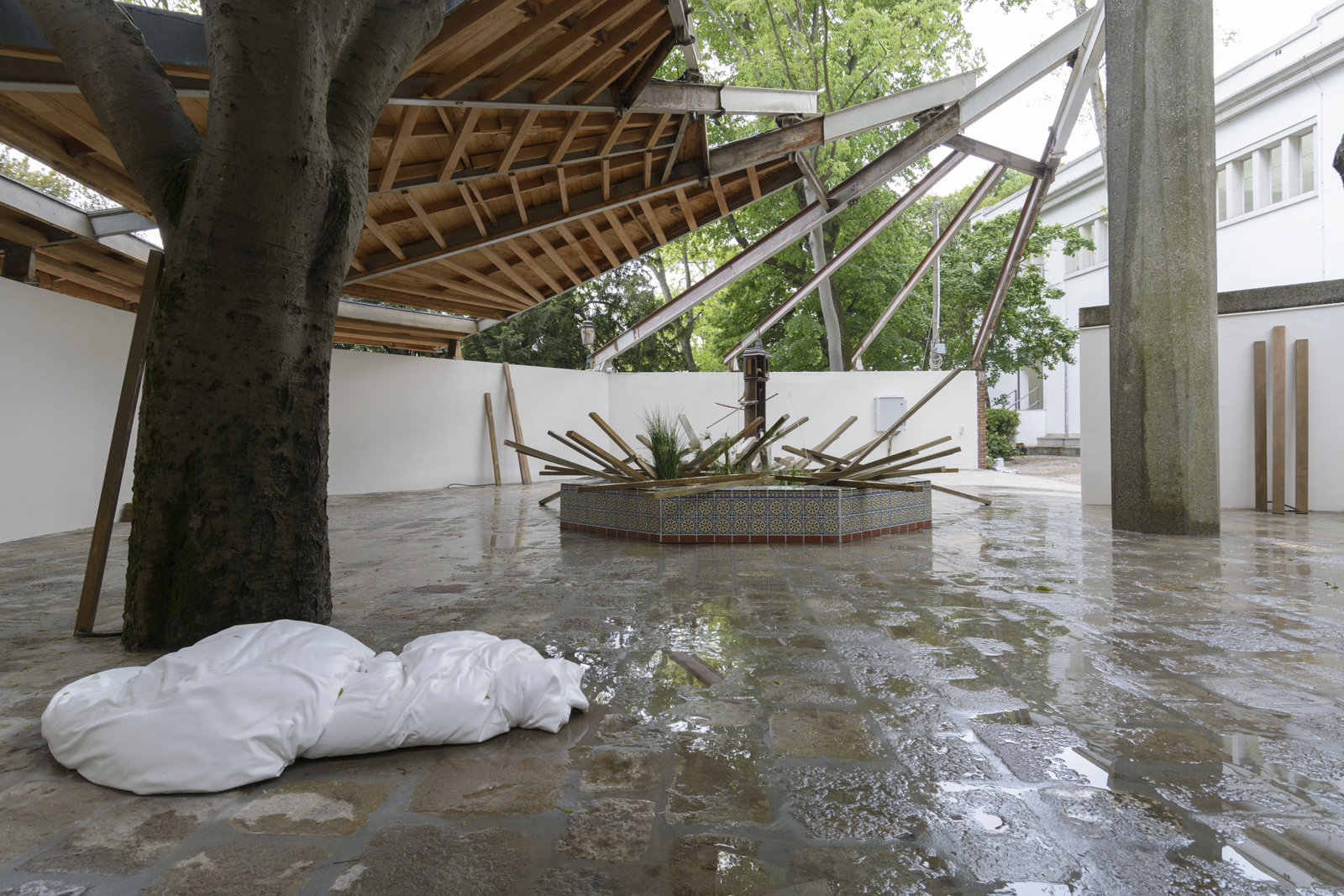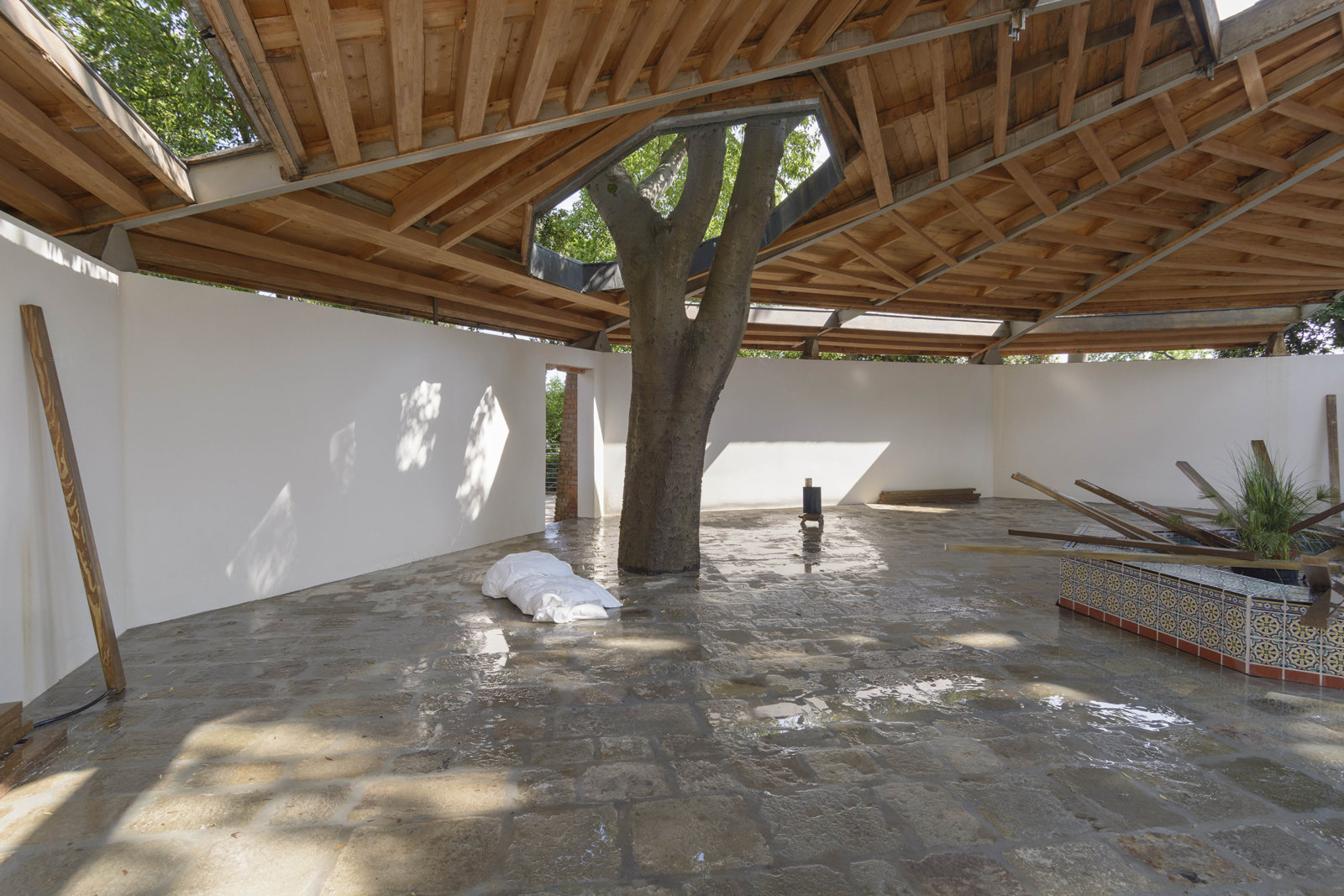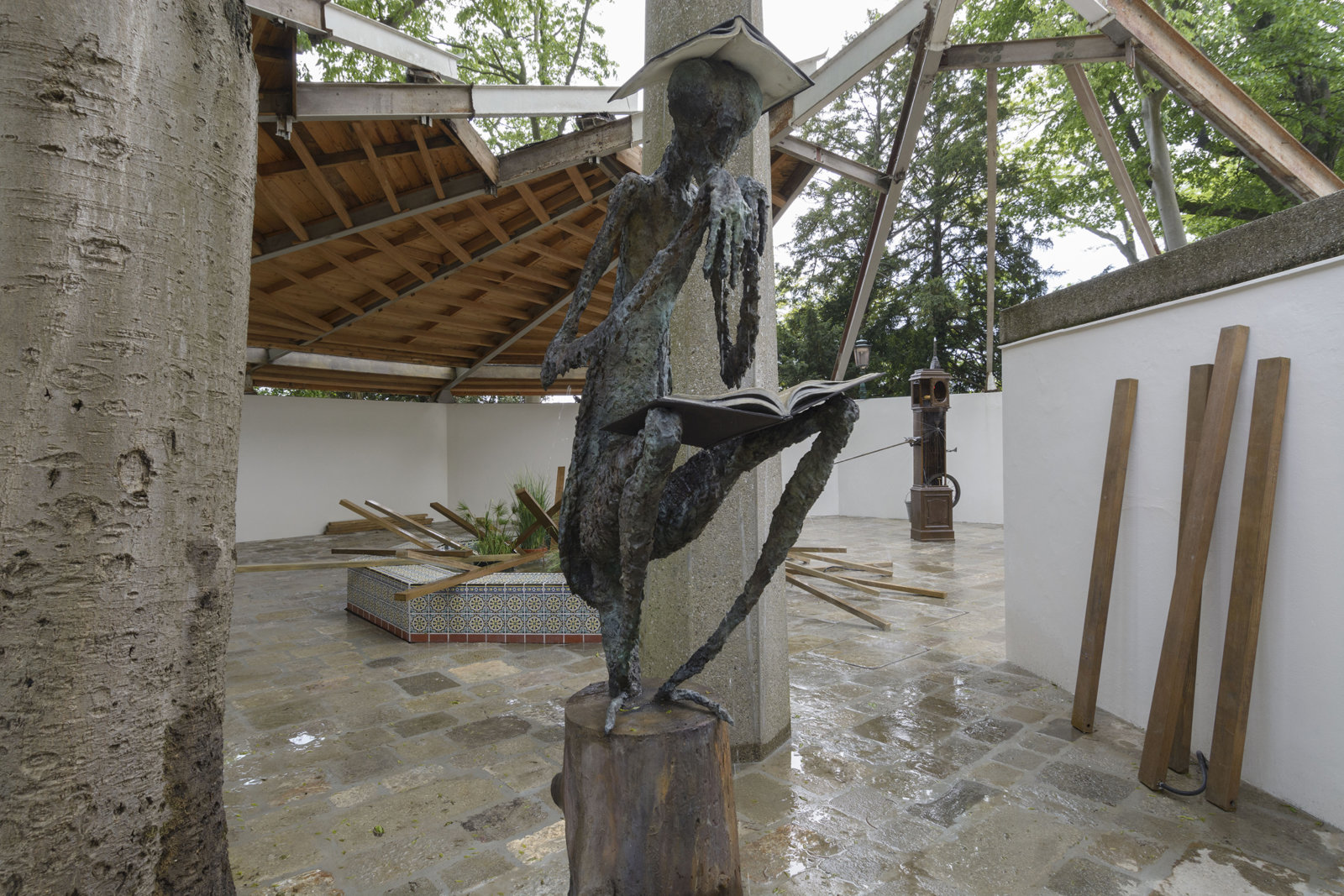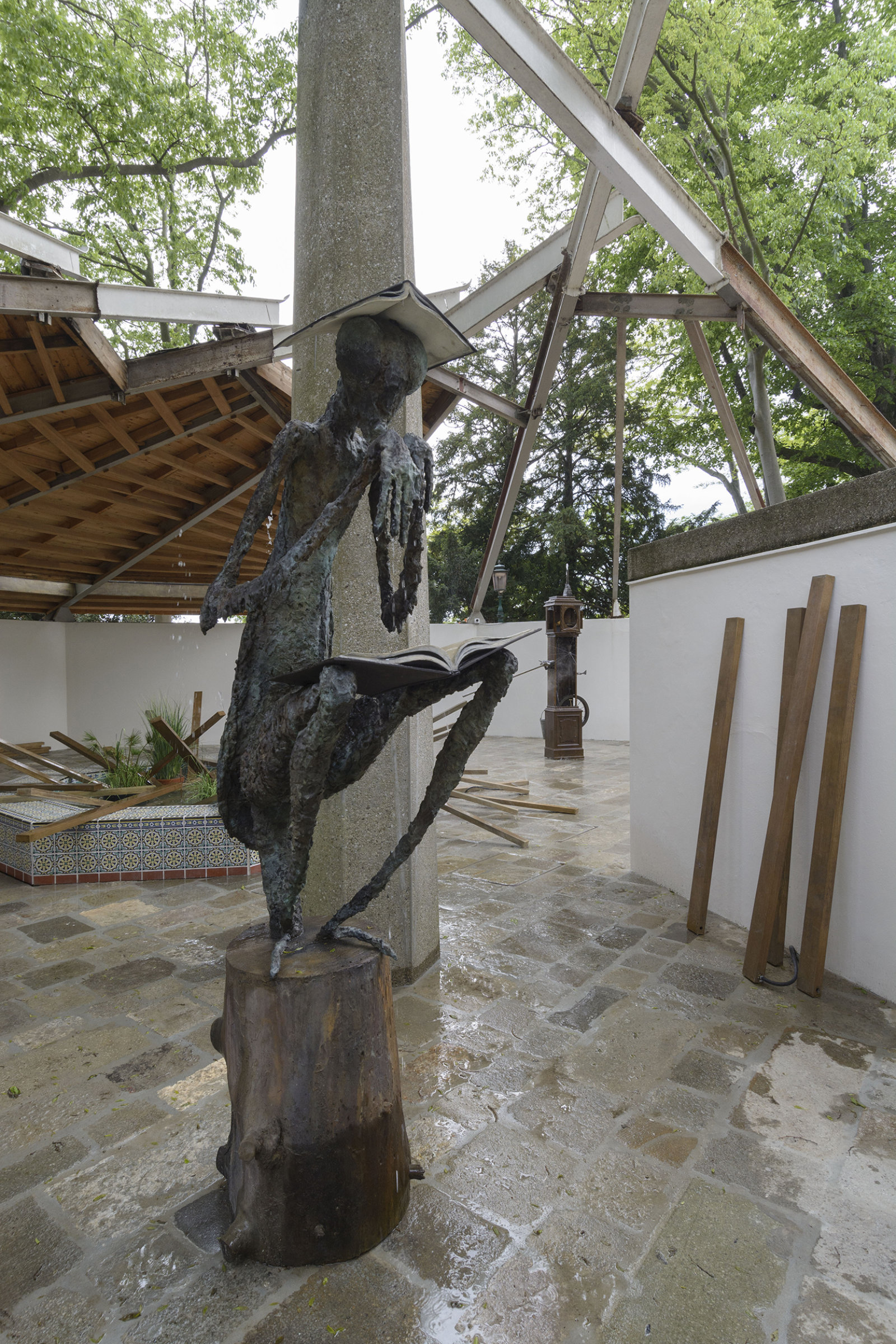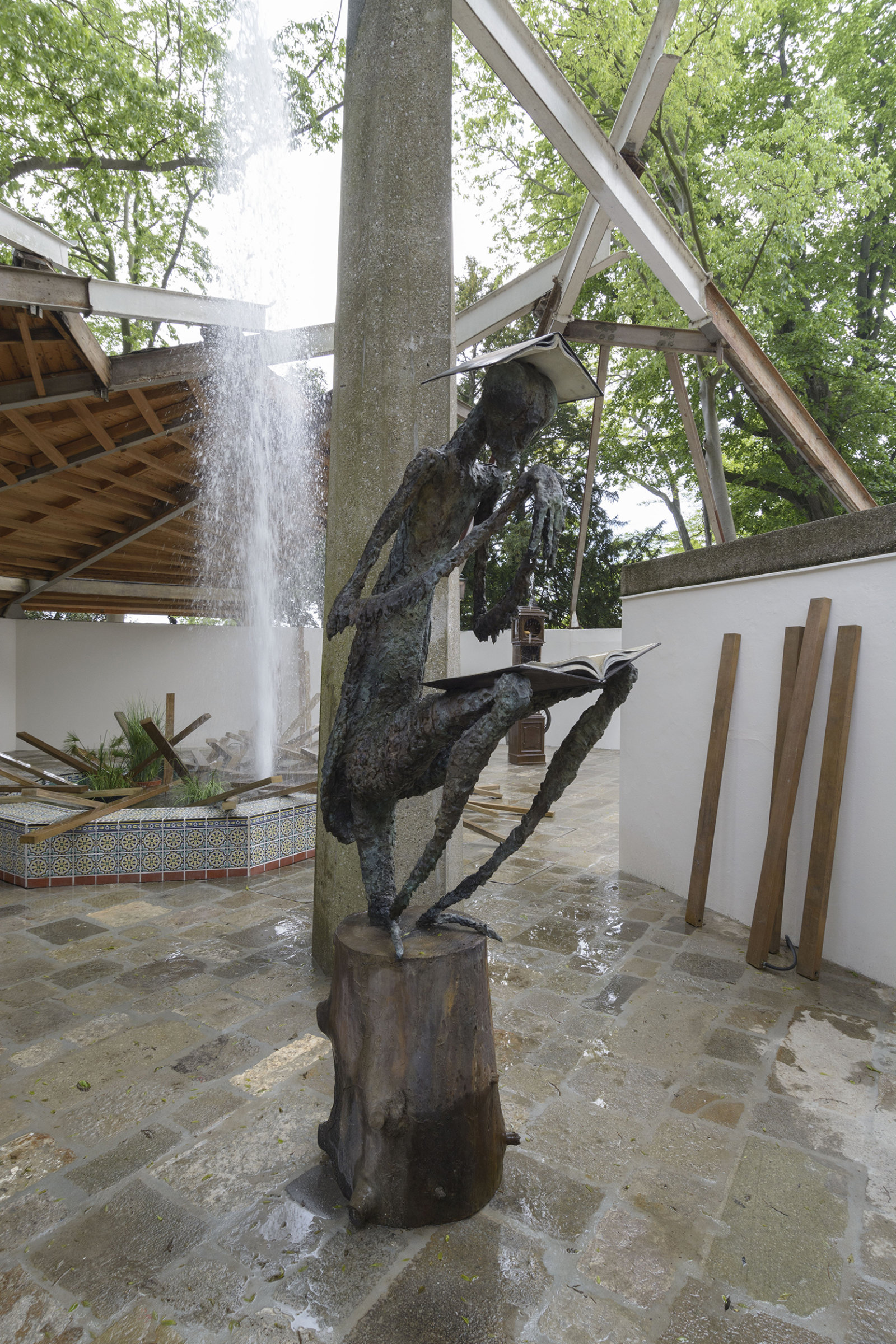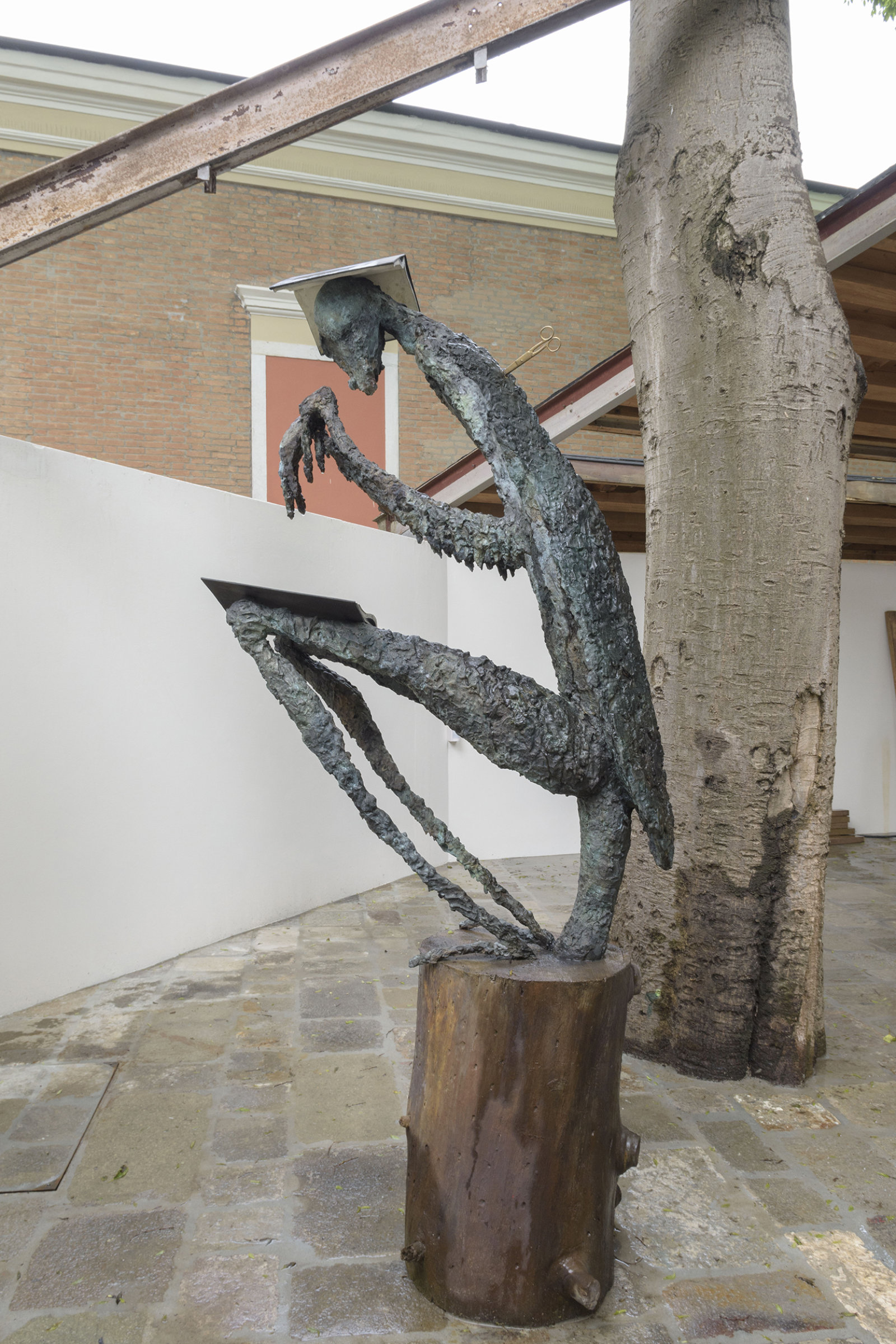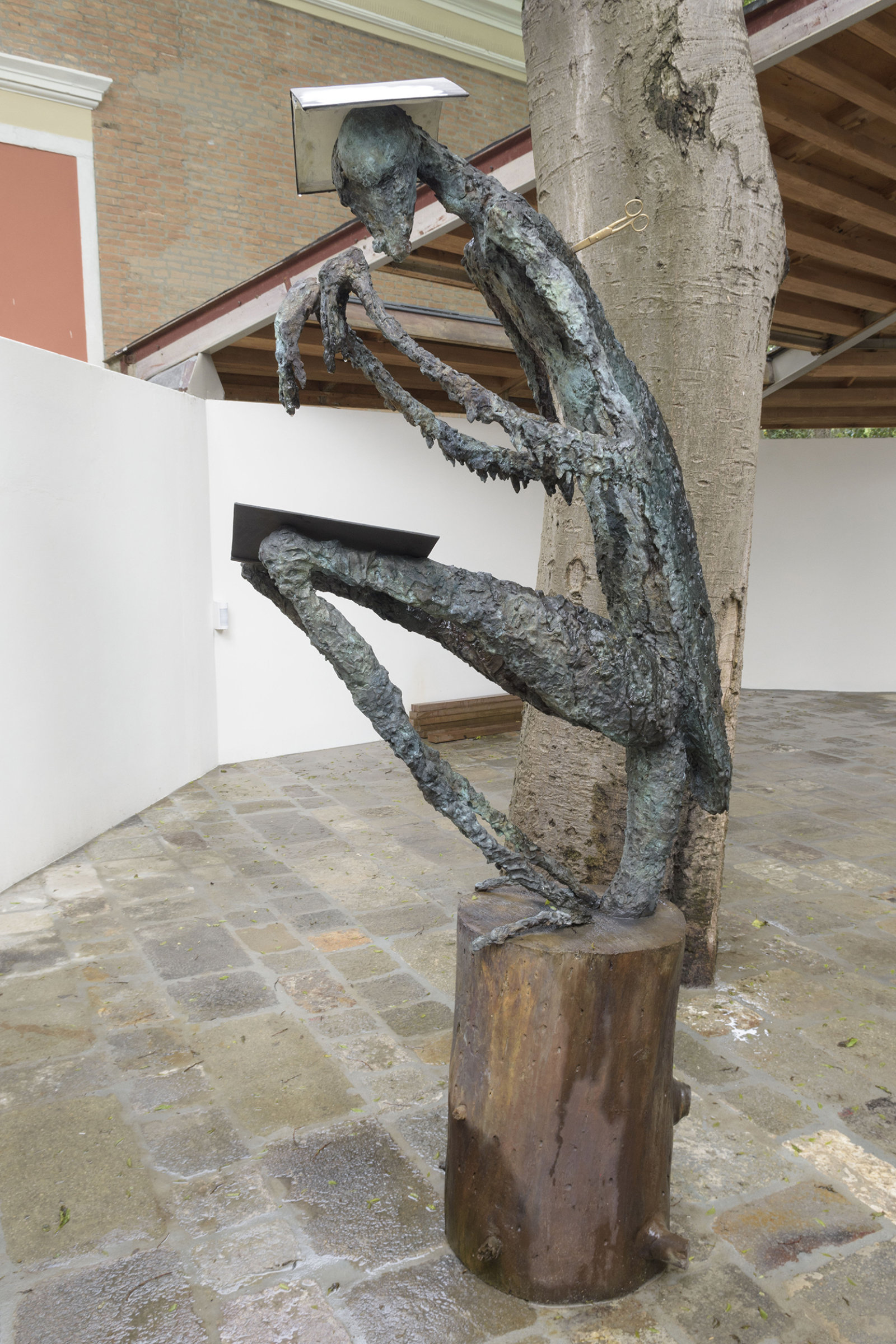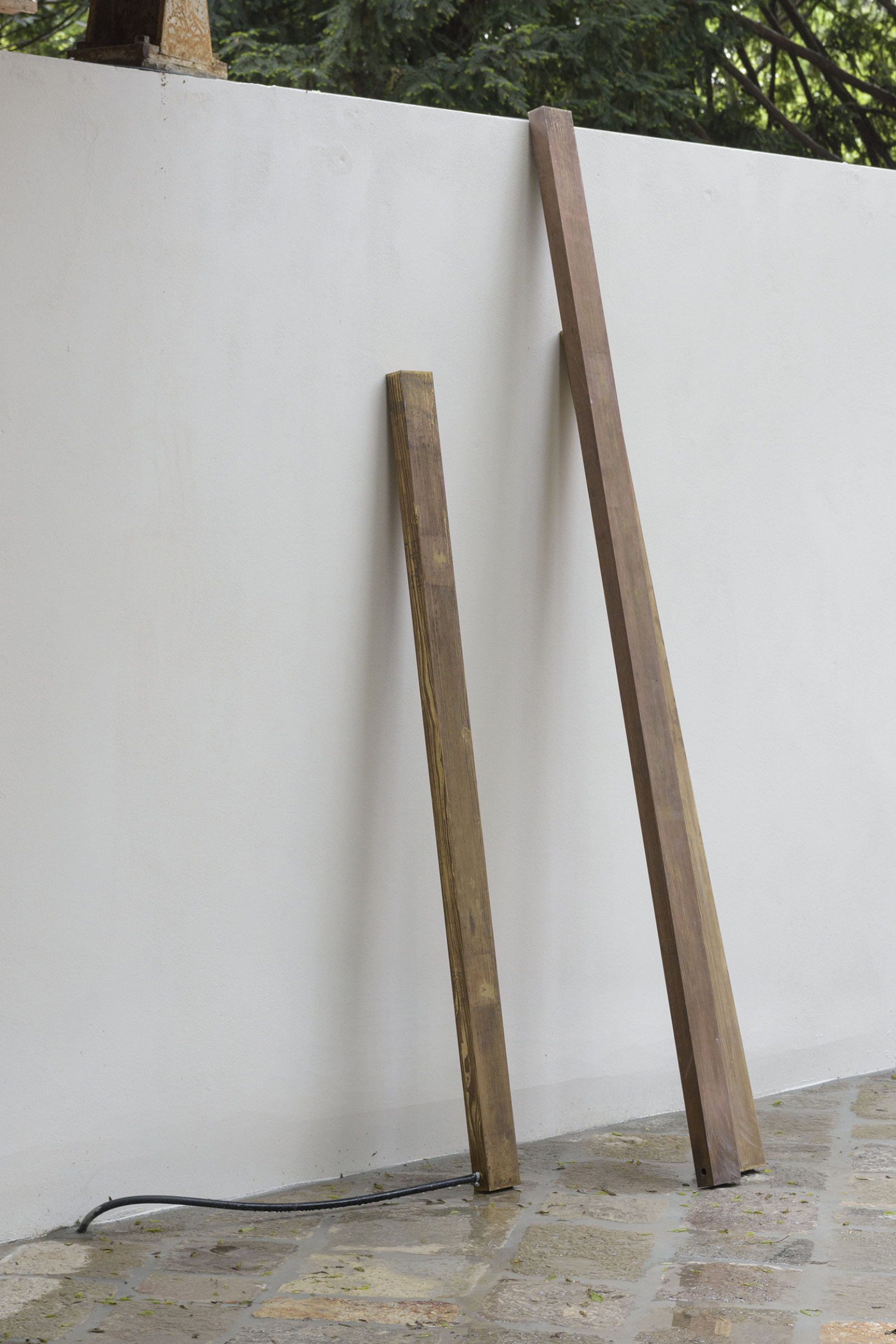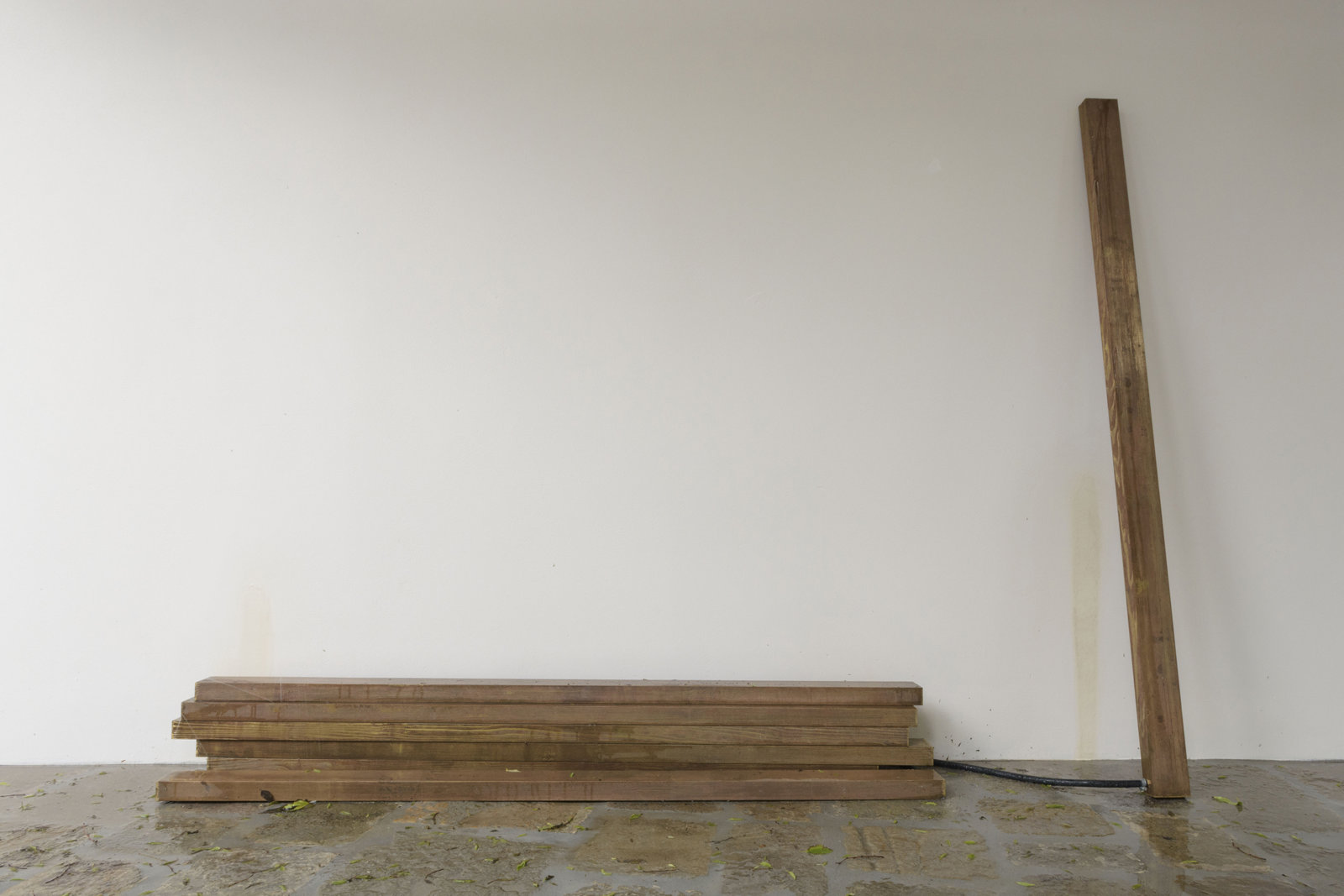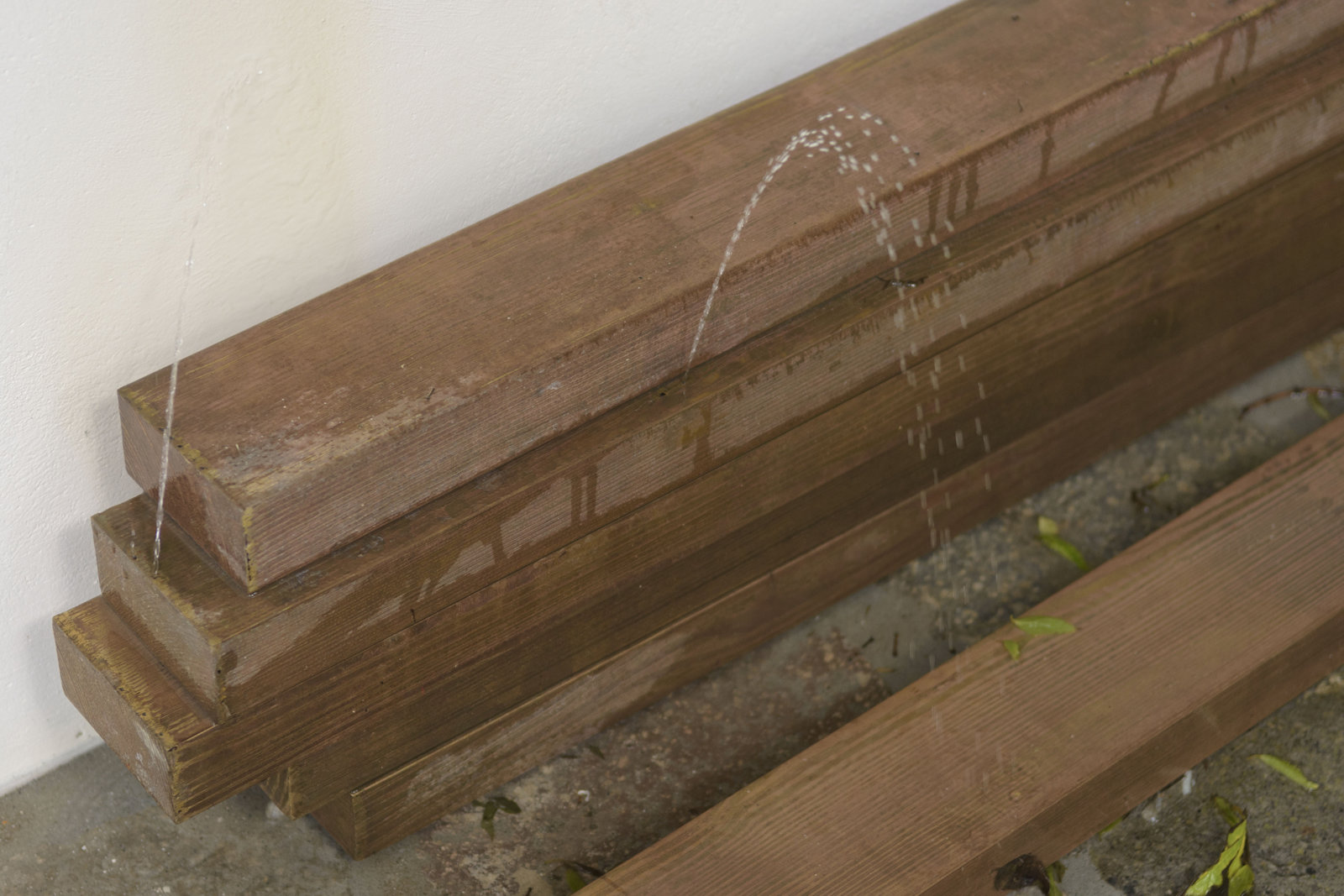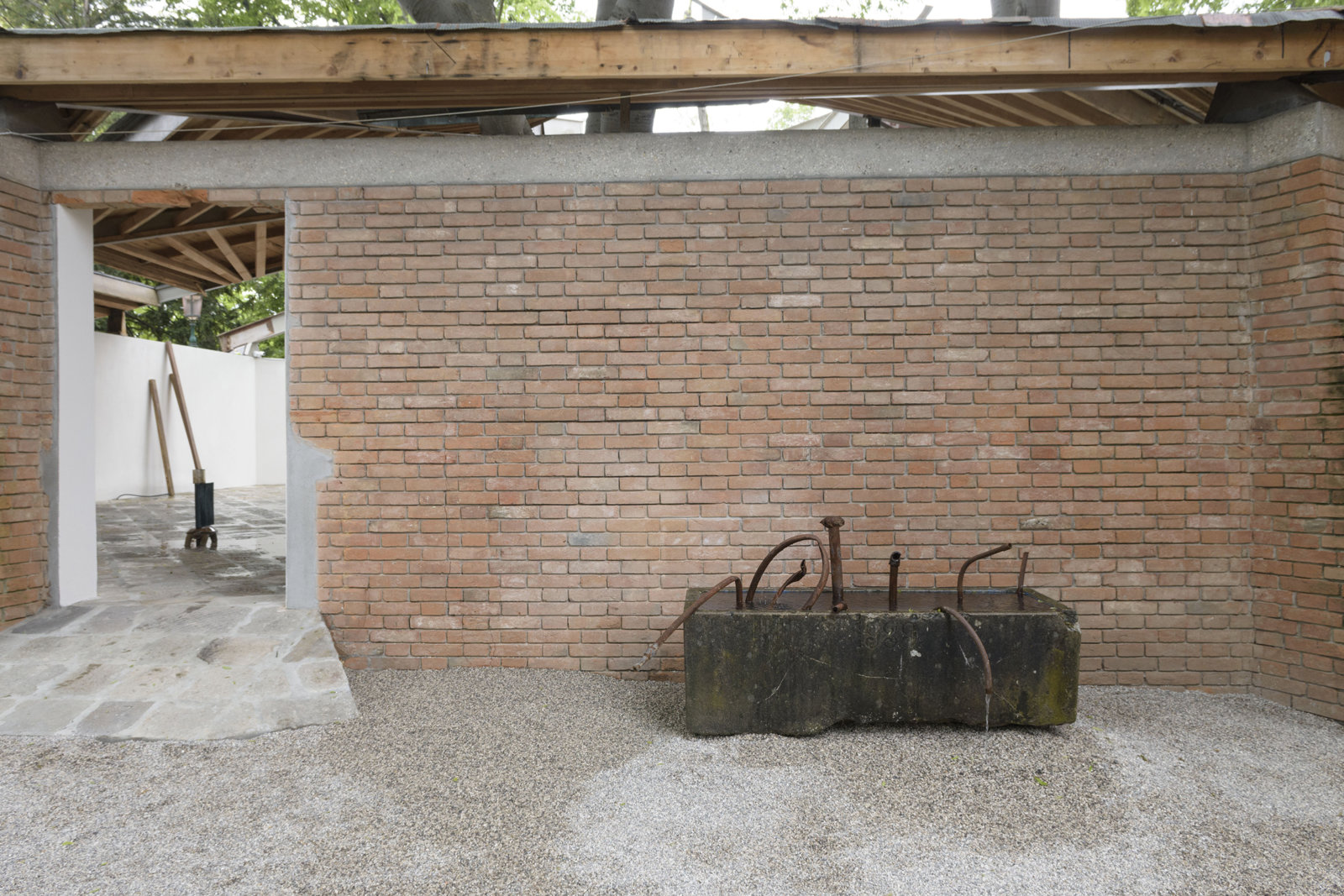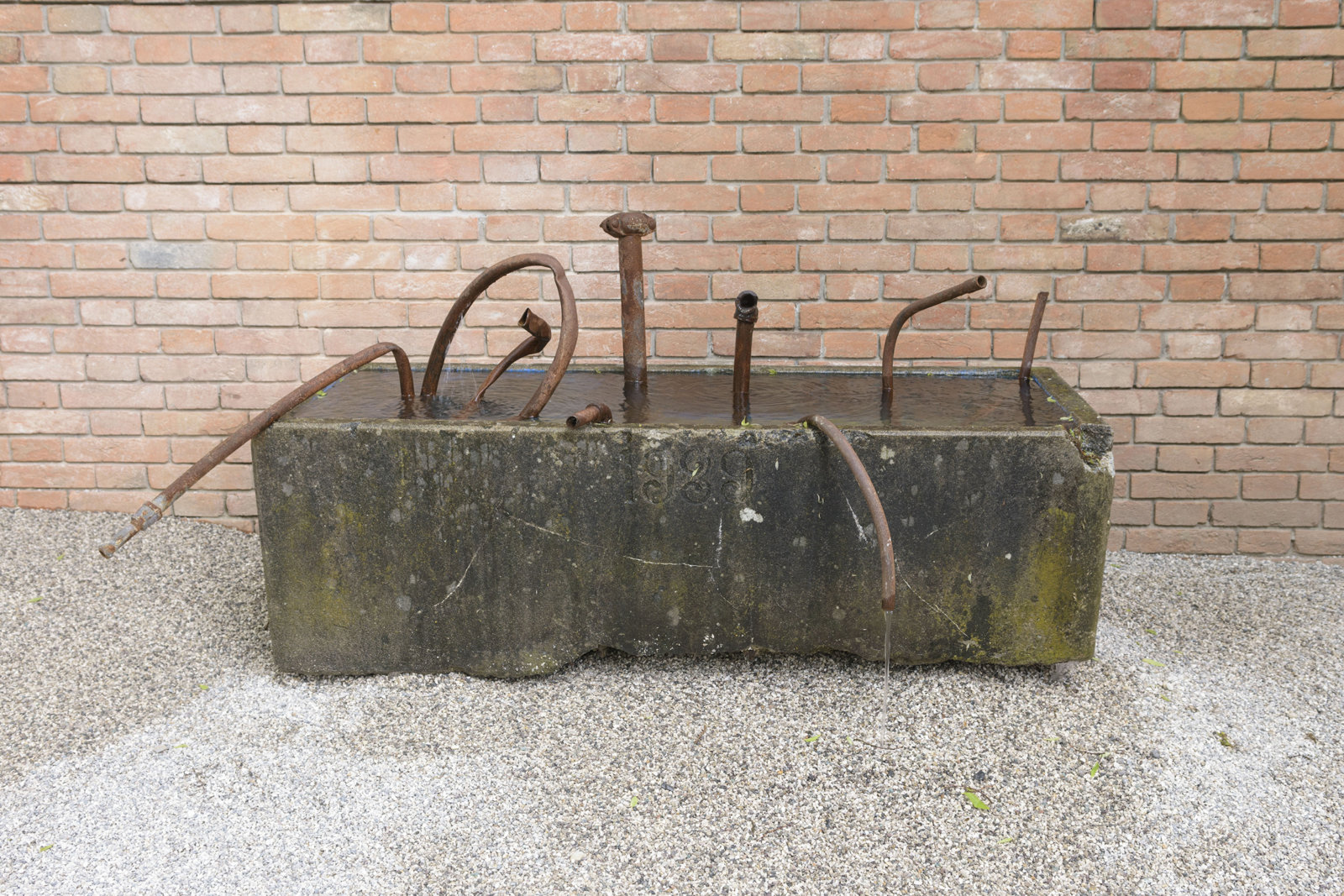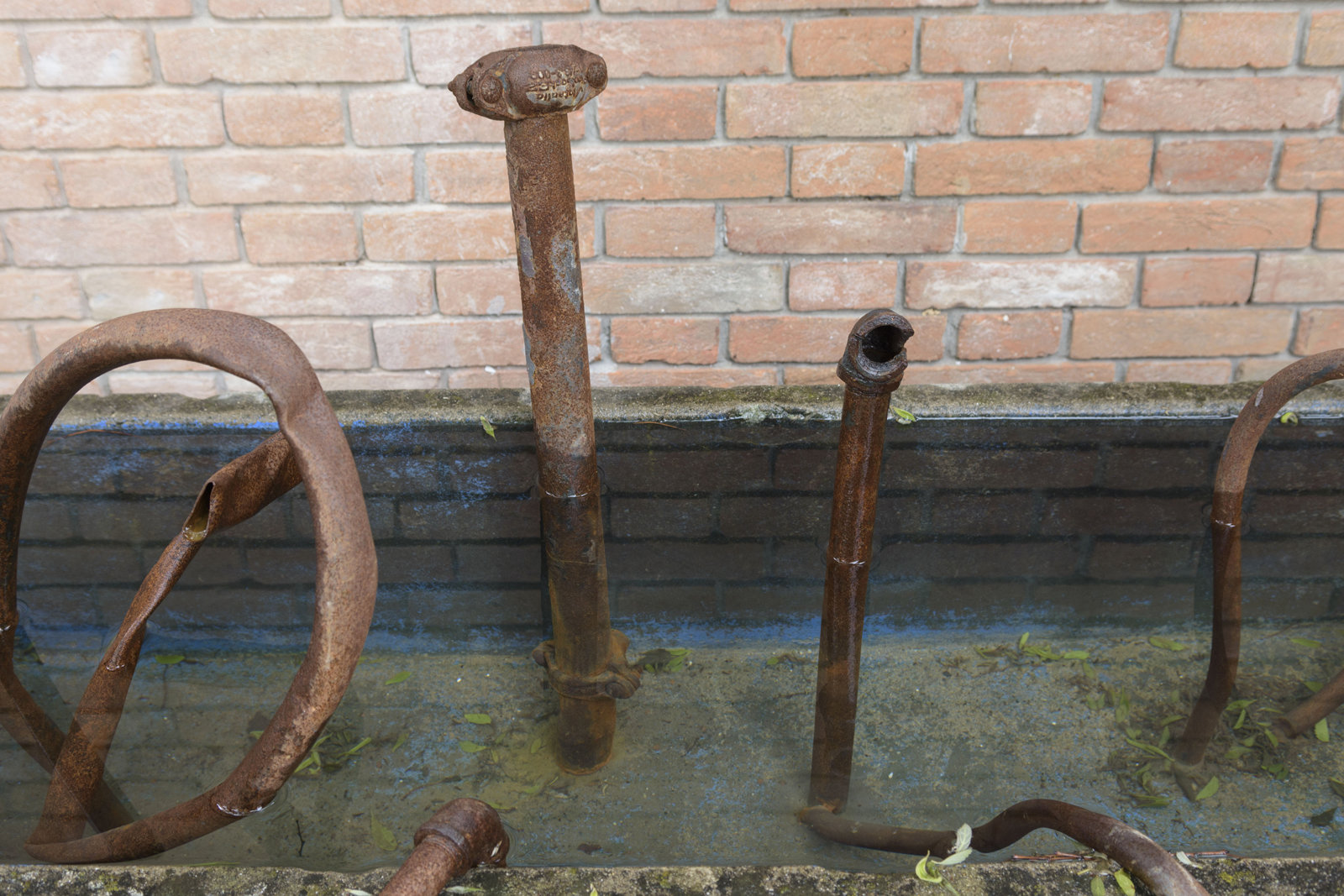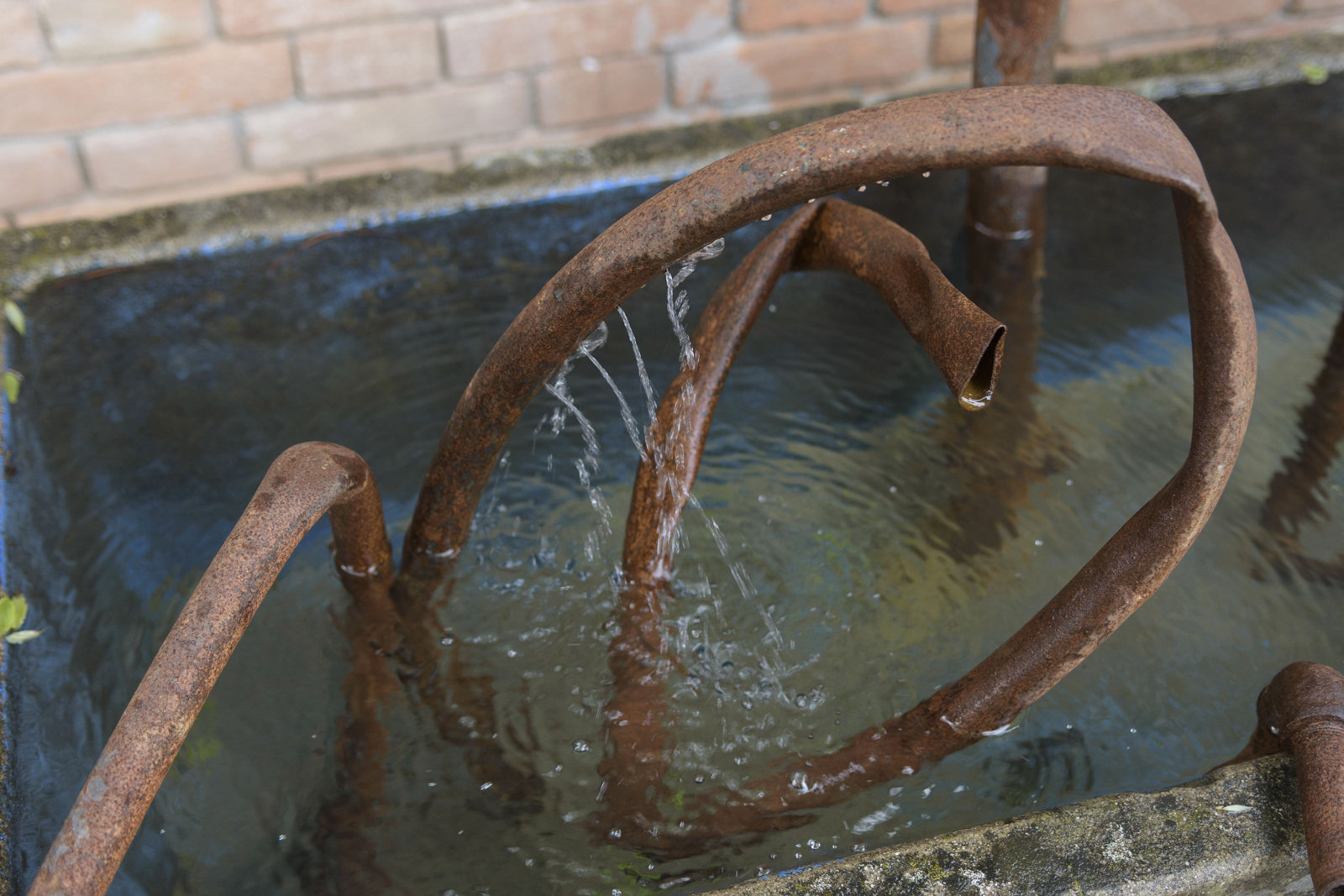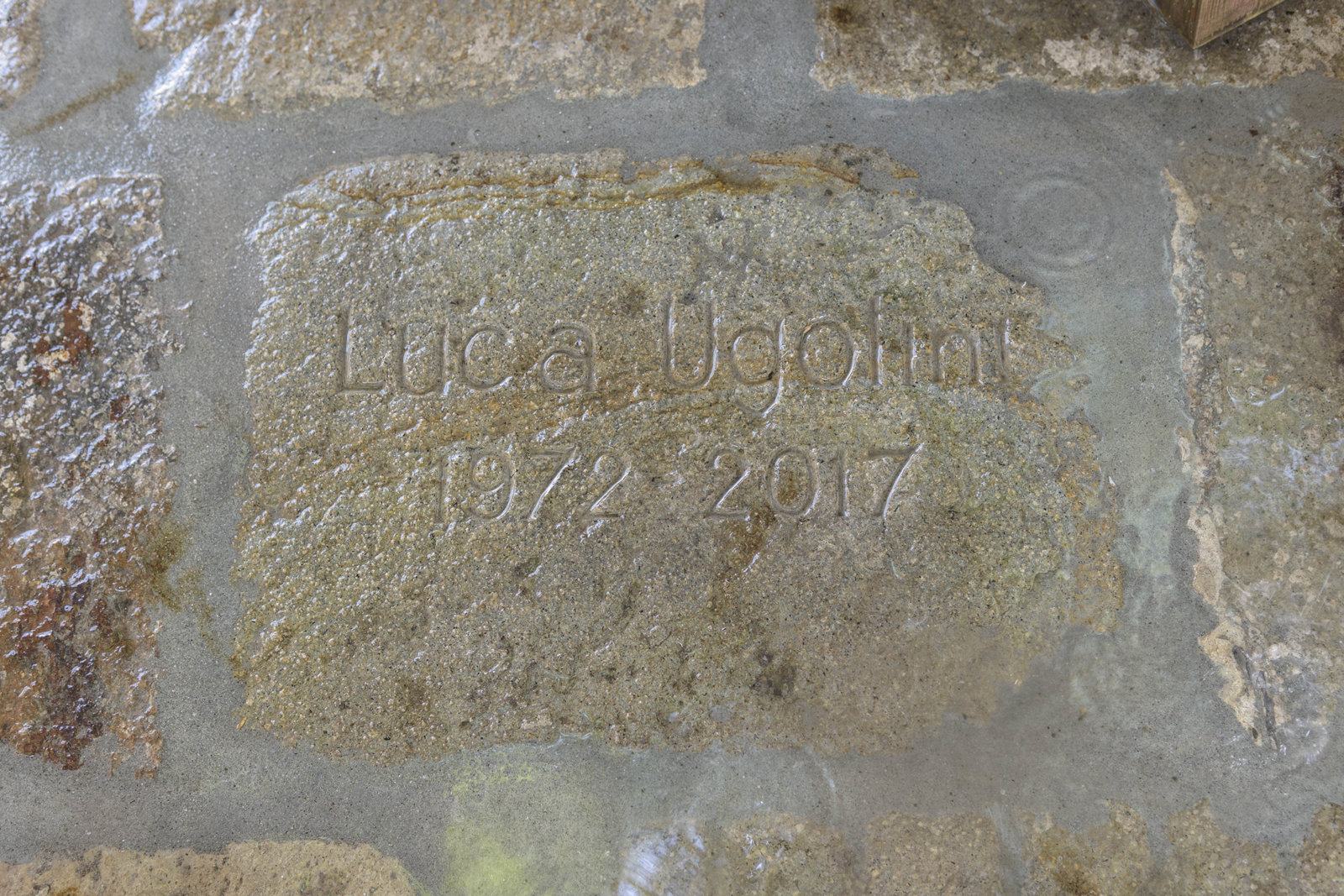Geoffrey Farmer – A way out of the mirror, MAY 13–NOVEMBER 26, 2017
Geoffrey Farmer
A way out of the mirror
May 13–November 26, 2017
Canada Pavilion, 57th Venice Biennale, Venice, Italy
A geyser of – Allen Ginsberg reading in Washington Square Park, 1966, book wide open, bearded, right hand in pocket, and then myself as a student, curious, sitting on the edge of the fountain in the courtyard of the San Francisco Art Institute waiting anxiously for a John Cage performance to begin in 1991. A duvet freshly slept in by Karl after an LSD trip in the rock formations of the Maggi River, I had to drive us to the airport the next day. The memory of standing on a cliff on the edge of the Pacific Ocean spreading the ashes of an acquaintance who died of complications due to AIDS. Listening to Kathy Acker read Gertrude Stein’s Tender Buttons with Jay DeFeo’s The Rose entombed in the wall behind her and the view of Alcatraz from that conference room. The discovery by my sister of photographs from 1955 of a collision between a train and my grandfather’s lumber truck. The grandfather I never knew, whose death somehow was connected to this event, whose name I removed from my name at age 23. The death of an architect, the founder of BBPR, who died in the Gusen concentration camp. Gian Luigi Banfi. Ten years later the firm designed our Pavilion. A page from an epic poem that quotes an artist “the key is in the sunlight,” page 33, Kaddish. Blessed, praised, glorified, exalted, extolled, water from Walden Pond. An image of a man penetrated by a wide variety of weapons like the ones found in Johannes de Ketham’s Fasciculus Medicinae, Venice, 1491. A tortoise stool found in the coffee room of a foundry meant for the chief to sit on. Germaine Richier’s La Mante, grande (1946–1951) as a self-portrait at age 18, when I didn’t die like I thought I would. Pieces of metal removed from the ruins of Peter Pitseolak High School which burned down in Cape Dorset, Nunavut, and the promise I made to help rebuild its library. A livestock water trough that survived WWII in an open field in St. Gallen, Switzerland, given to me as a gift from a farmer. Masegni stones found by Luca, excavated in the Euganean Hills some as old as the 1600s. 20 minutes from August 15th, beginning at 2:00pm, the women set on fire on a train heading north and what Karl told me at 1am the night before about his father and what fathers can do and I understood too. Dug through the foundation of the pavilion using a shovel and pick-axe from WWI, bought from a museum 400 meters away. Dug into the Napoleonic rubble from the former Castello district, demolished in the 18th century to make way for the Giardini, and all the rubble piled up to create the hill where the pavilion sits. My restlessness, anxiety of never seeing the whole. The loss, the lost ones, hoping to escape, while I sat looking at my phone, not knowing and unable to help while they were drowning. My teared-up eyes of the news of Luca’s death and the memory of the last cigarette I smoked of his next to the doorway soon to be punched out of the side of the pavilion. The garden behind butchered by the workers to make way for a deck that has yet to be built. The surprise of the metal fence put up at the last minute. The struggle for the removal of the Canada sign; if it is still on the front of the pavilion, I lost. The war reparation money in every brick. The 71 planks from my grandfather’s accident printed using a lithographic process; at first, I thought they were exclamation marks, and then later, peacock feathers. The myth of how the peacock got its coloured feathers by eating the poison berries of the garden. All this, as I stand here, looking out at the lagoon. All souls, all living, all gaseous, watery, vegetable, mineral processes, the fishes, the brutes, all nations, colours, barbarisms, civilizations, languages, all identities that have existed or may exist on this globe, or any globe, all lives and deaths, all of the past, present, future. This vast similitude spans them, and always has spann’d, and shall forever span them and compactly hold and enclose them.
–Geoffrey Farmer
Documentation by Francesco Barasciutti.
